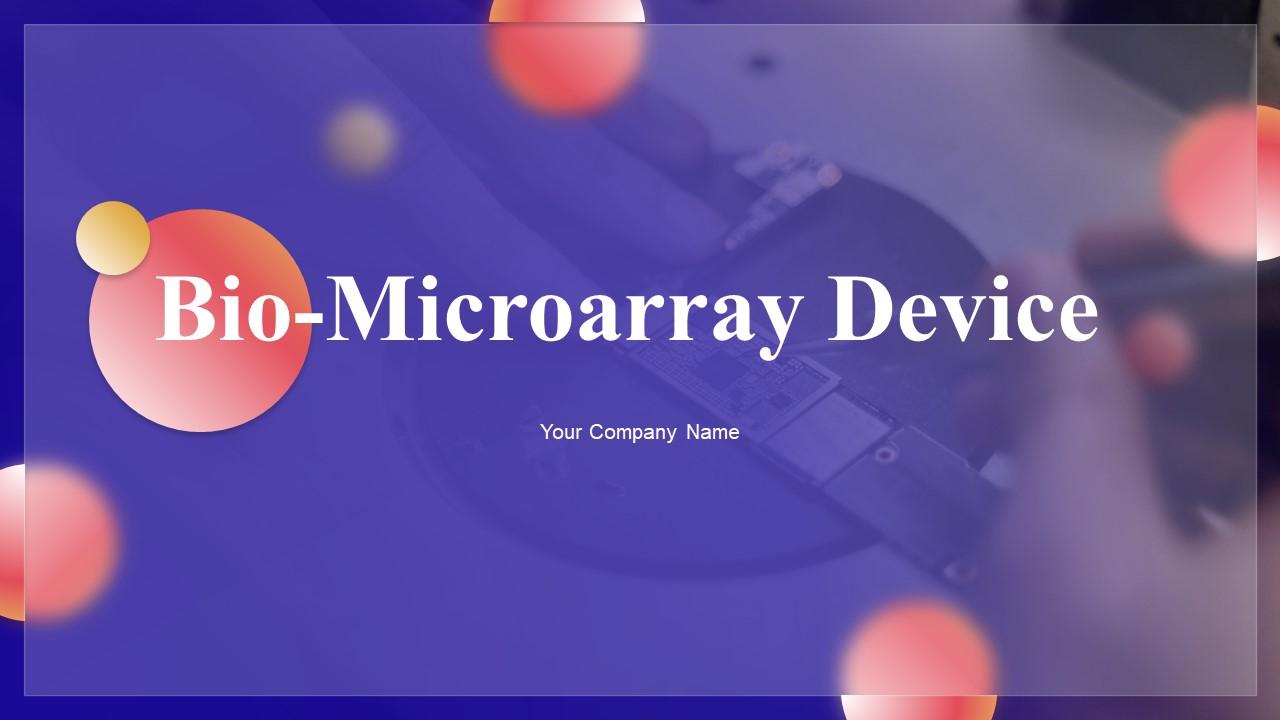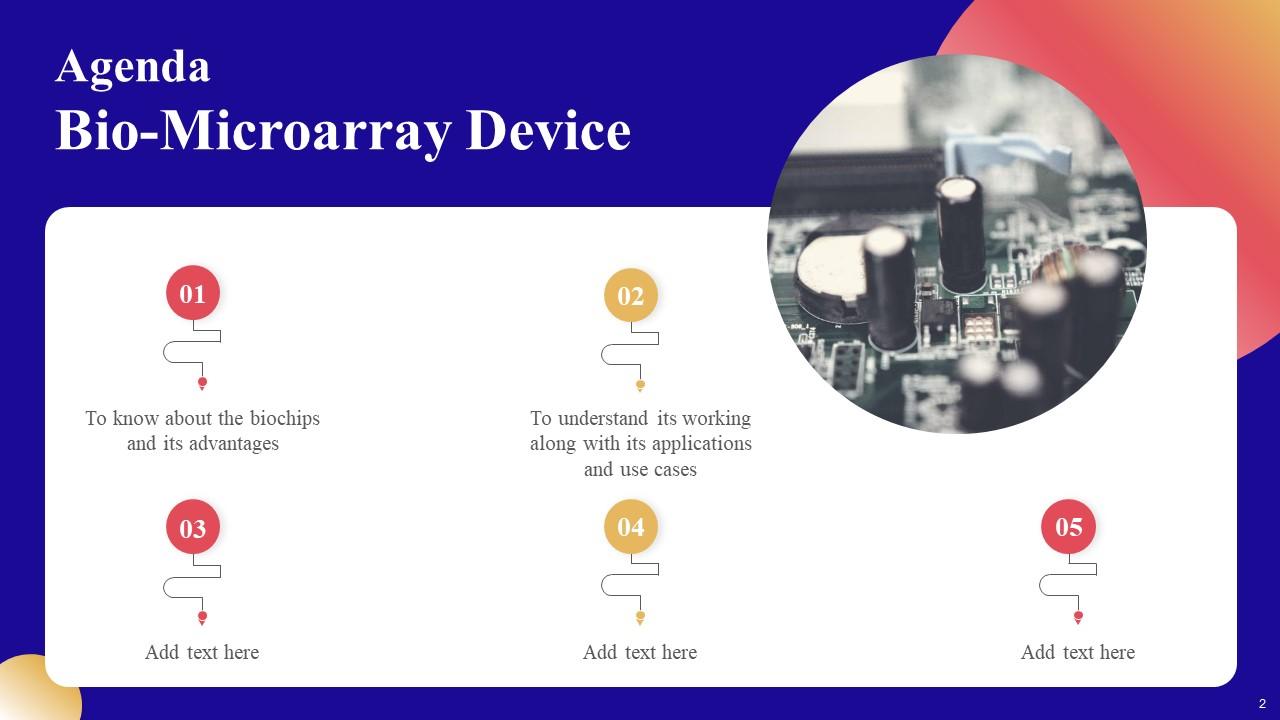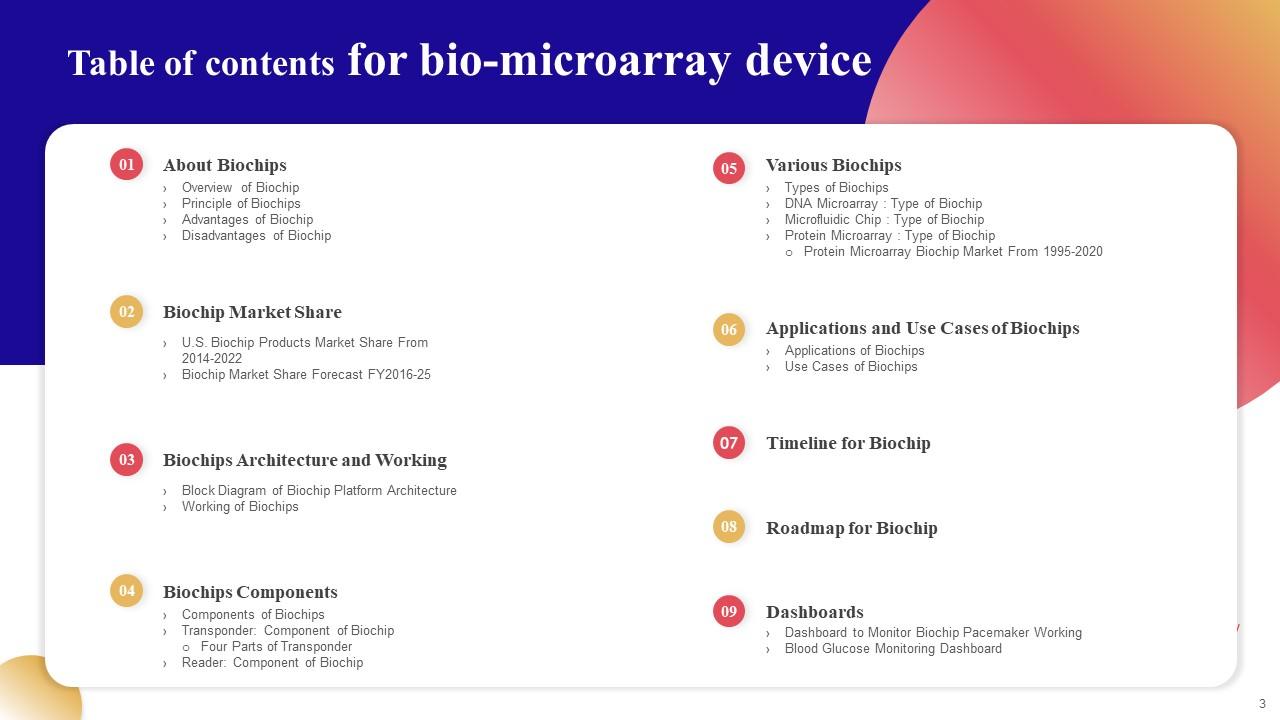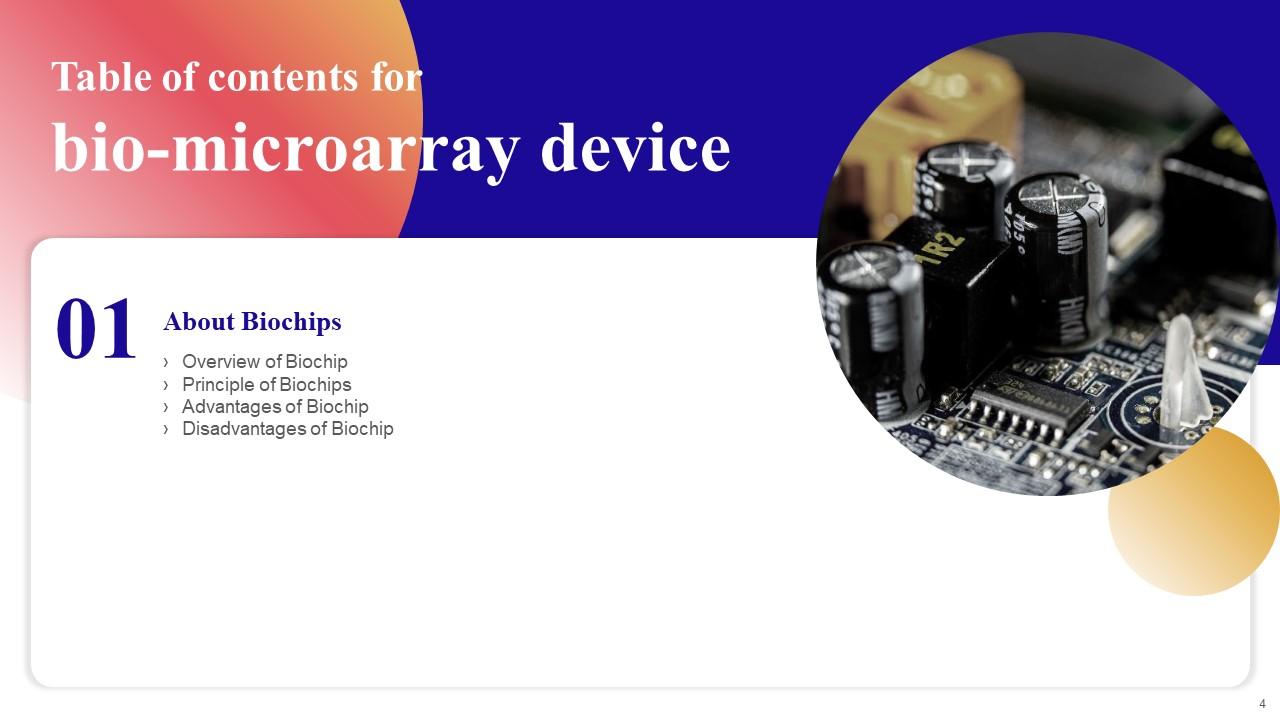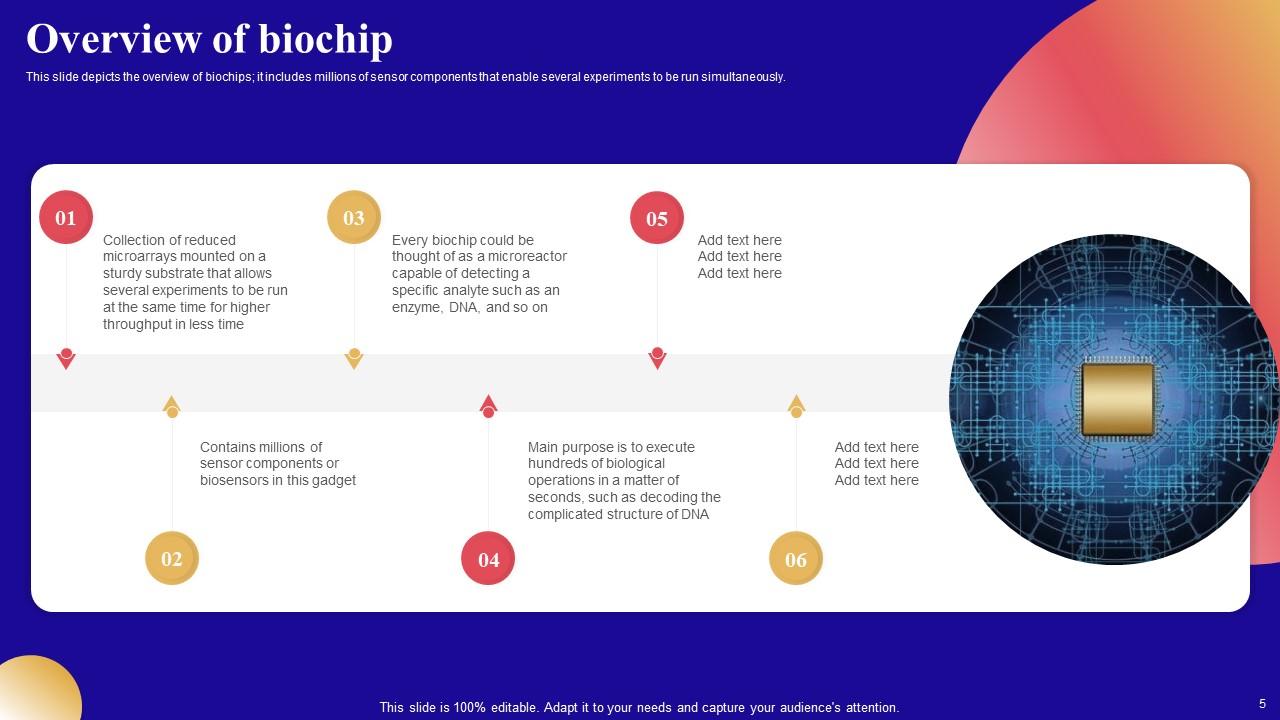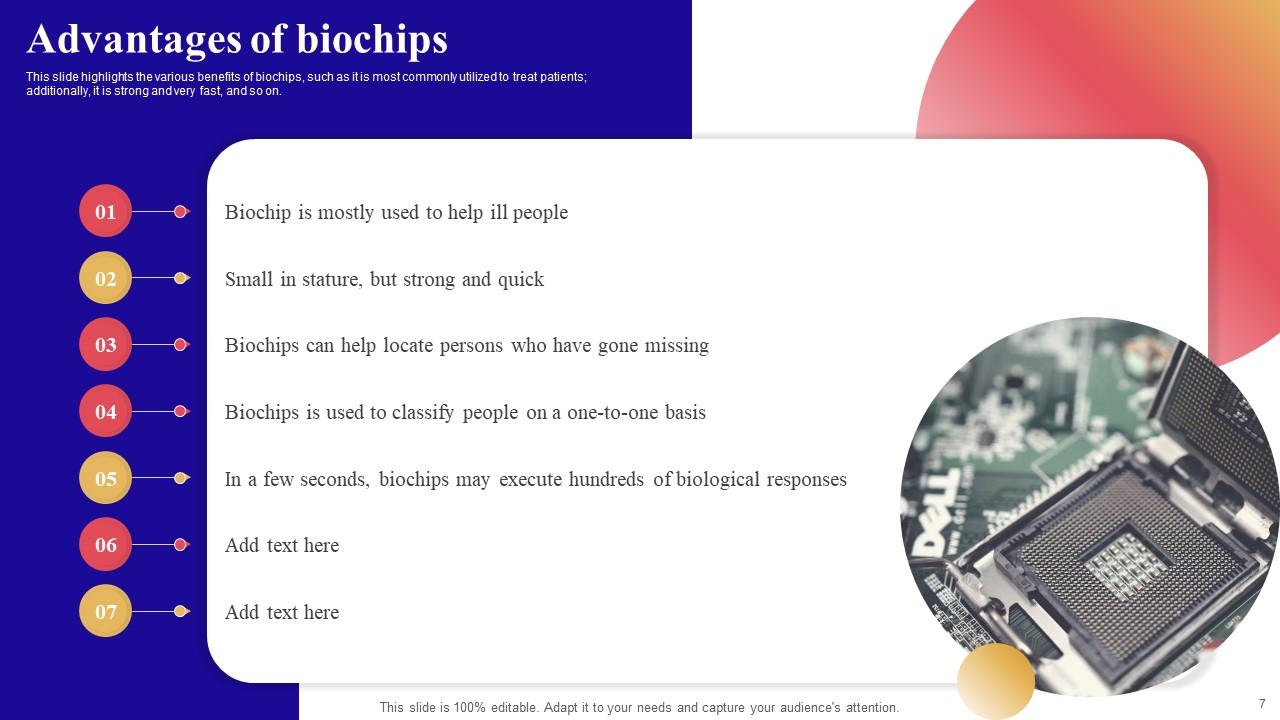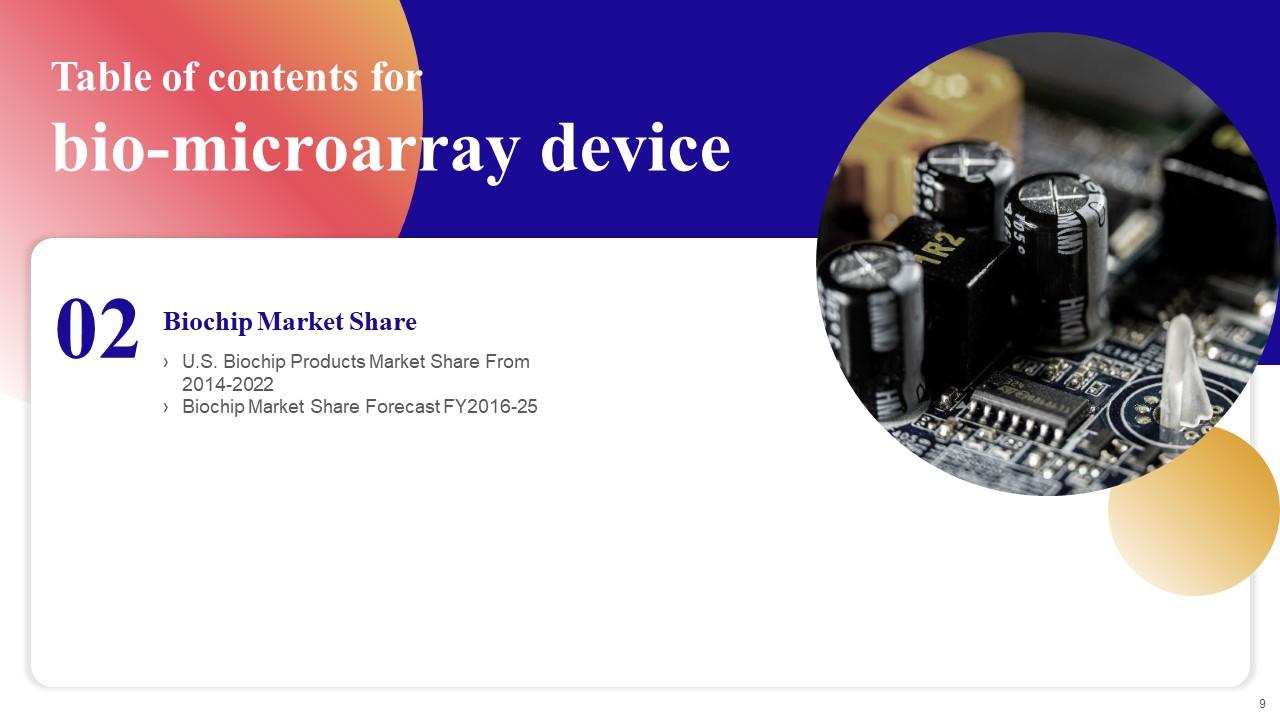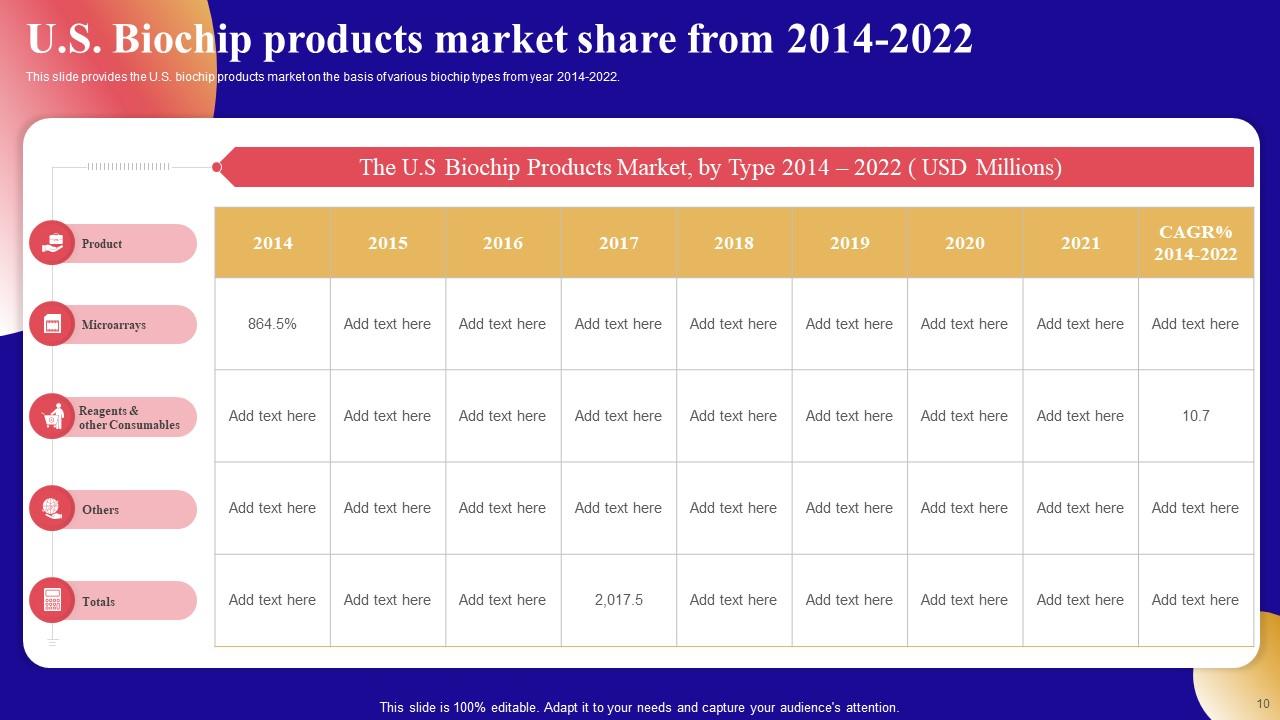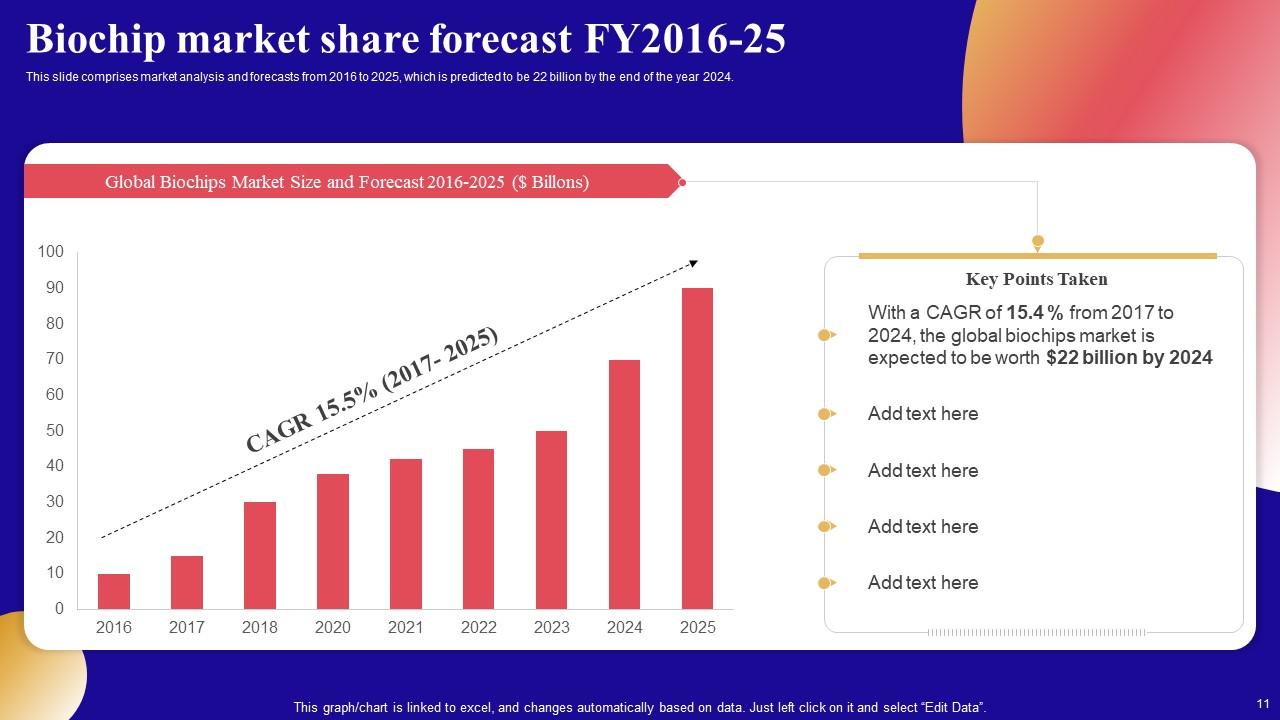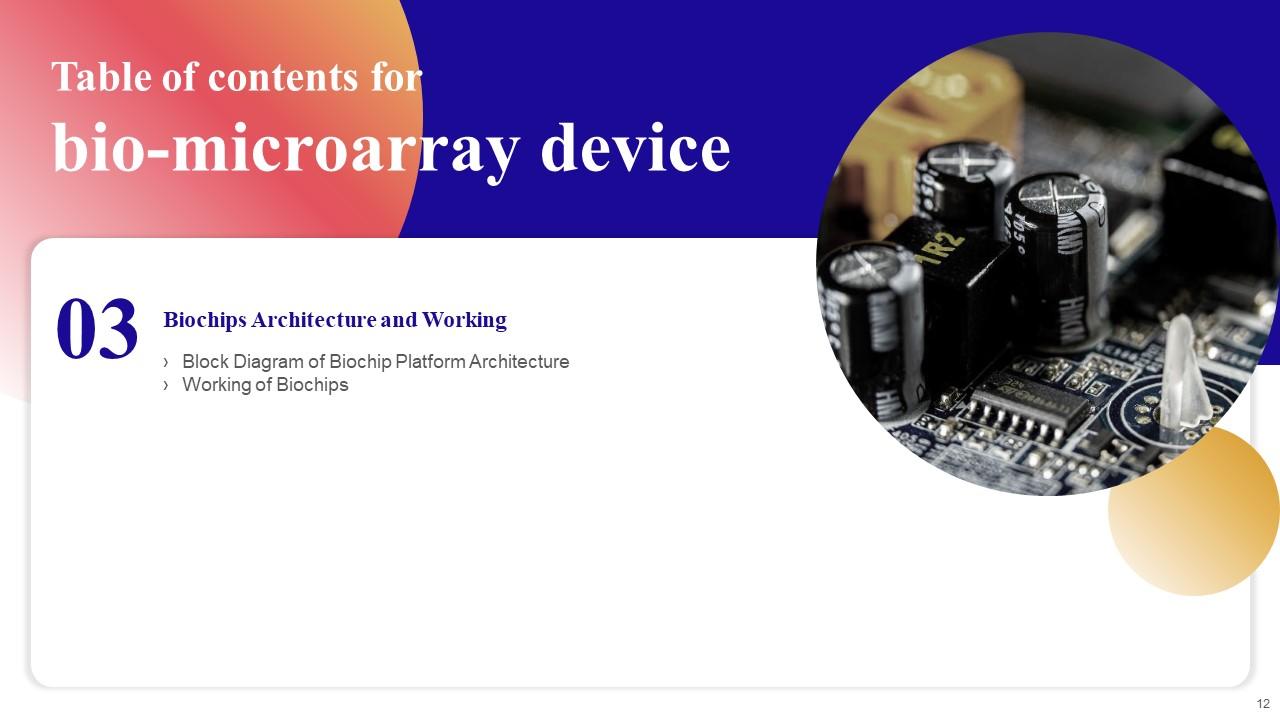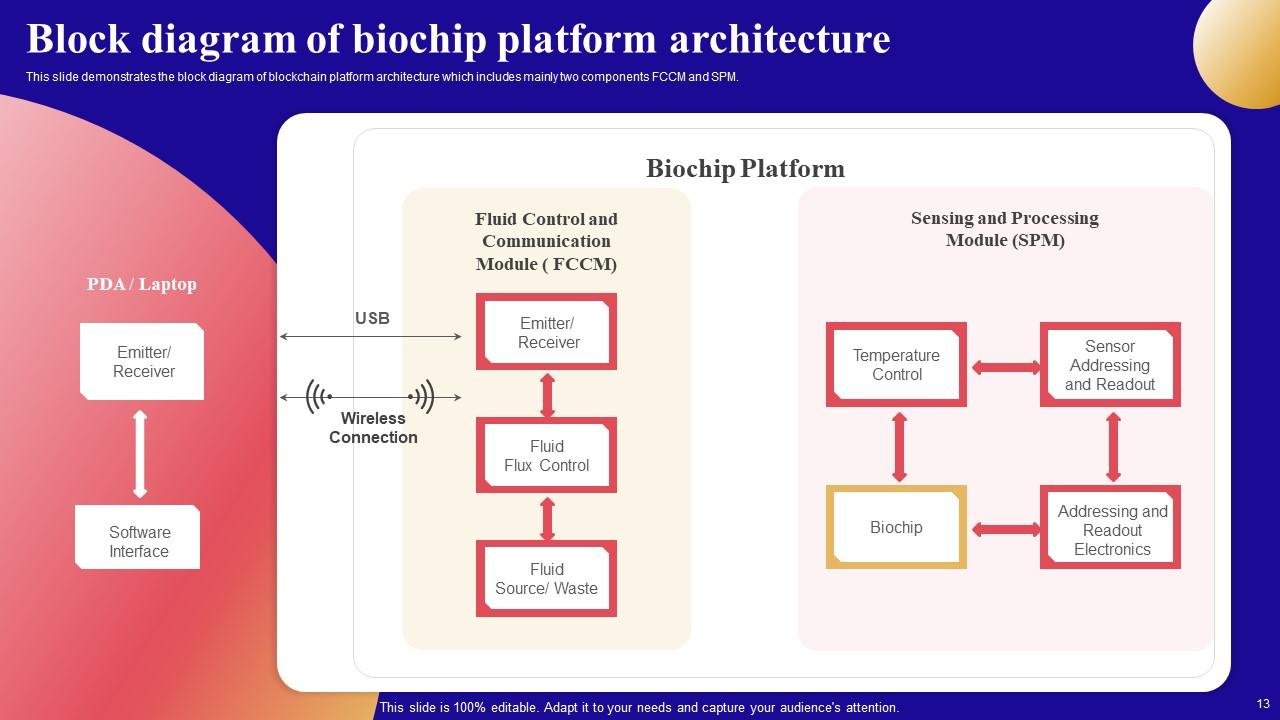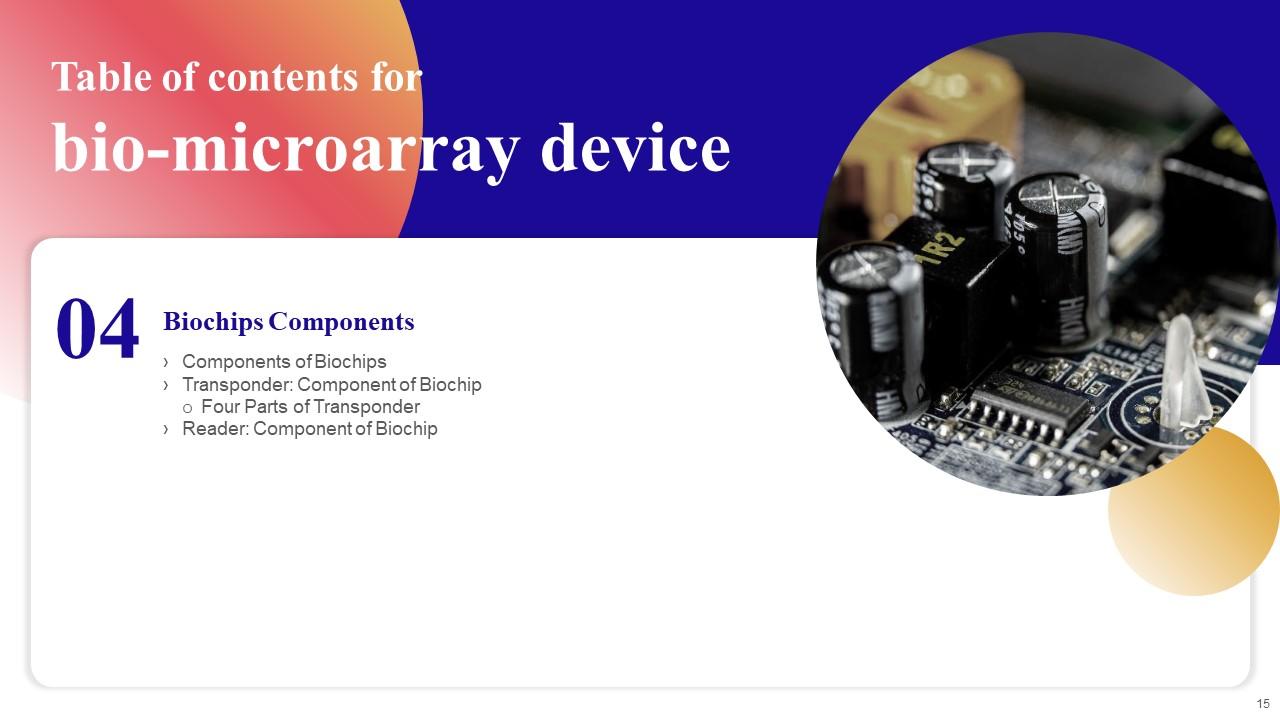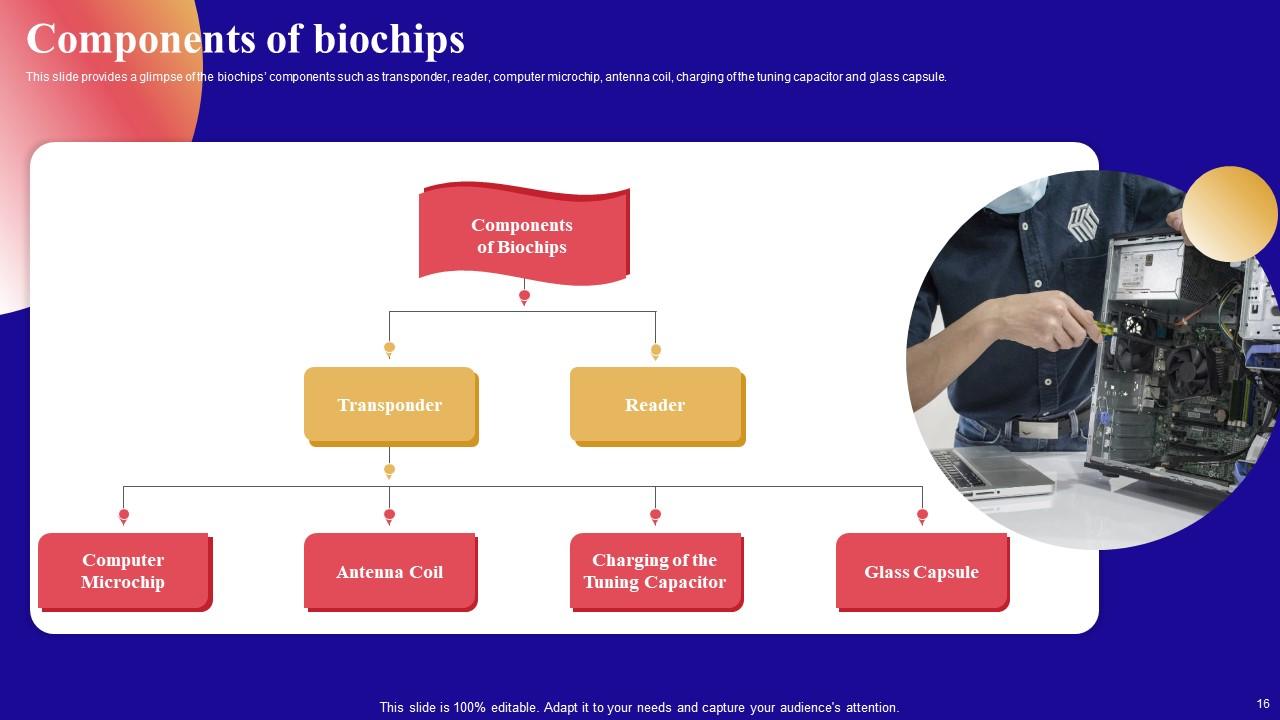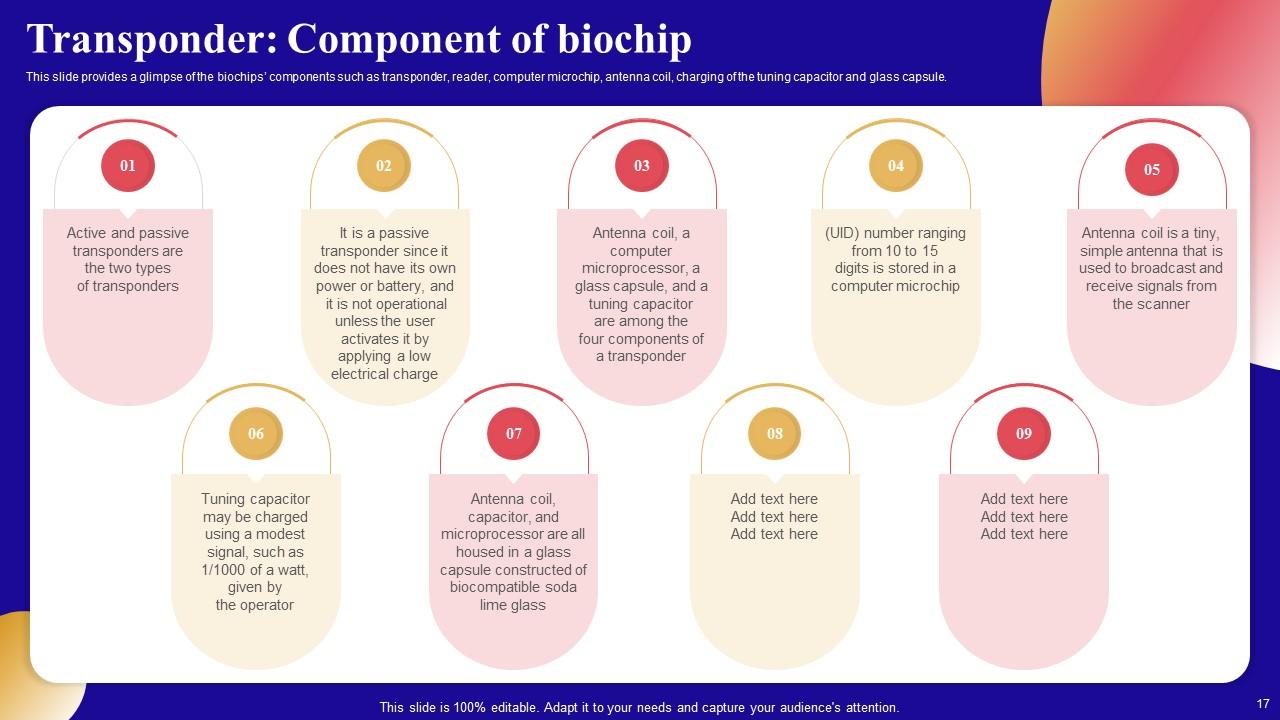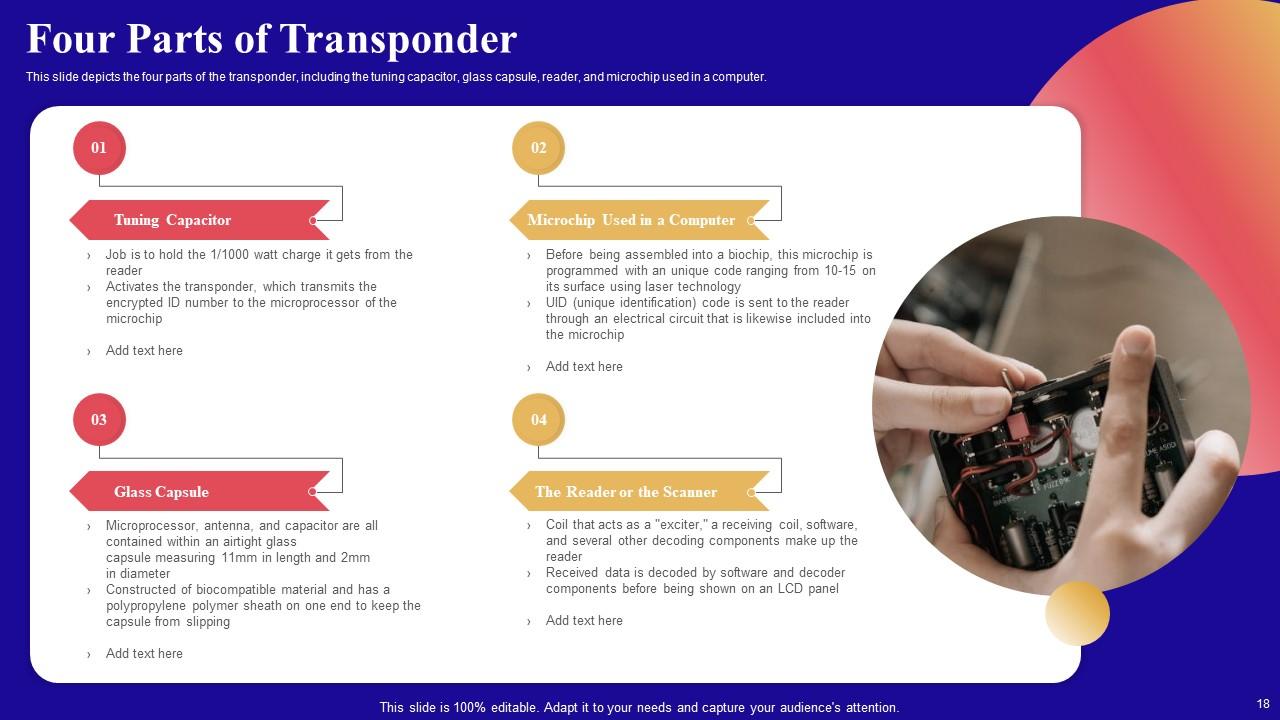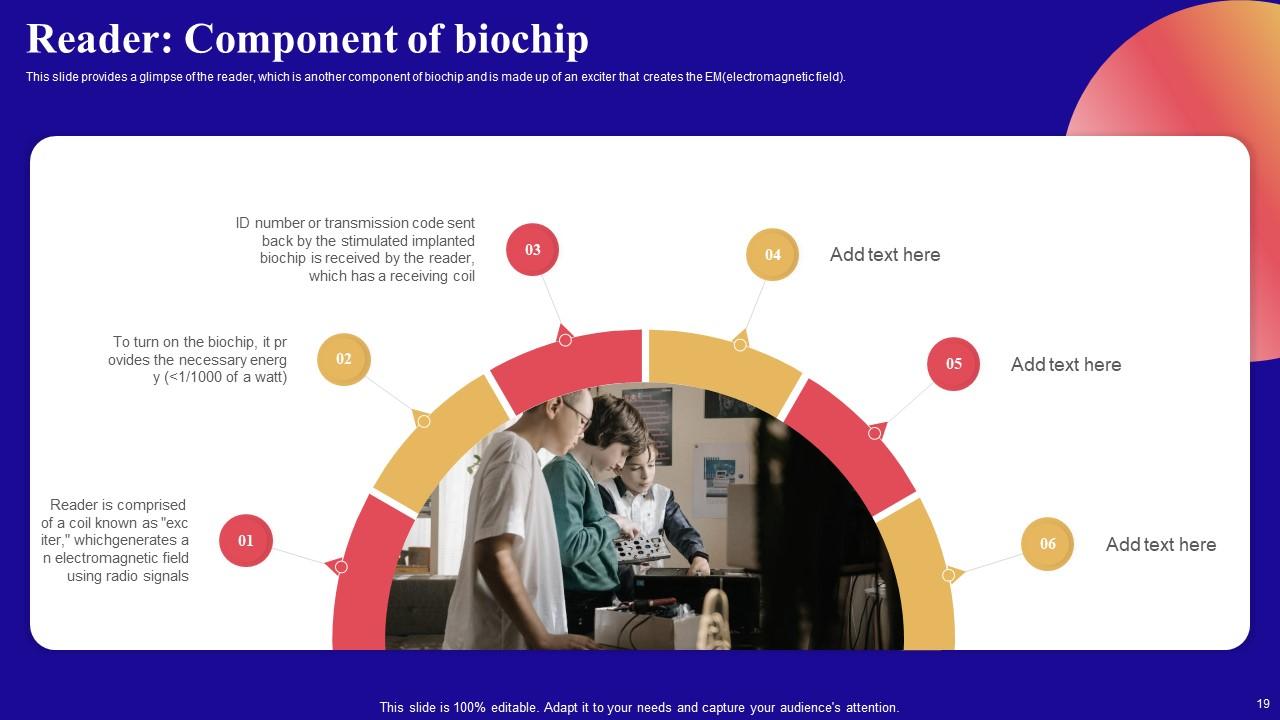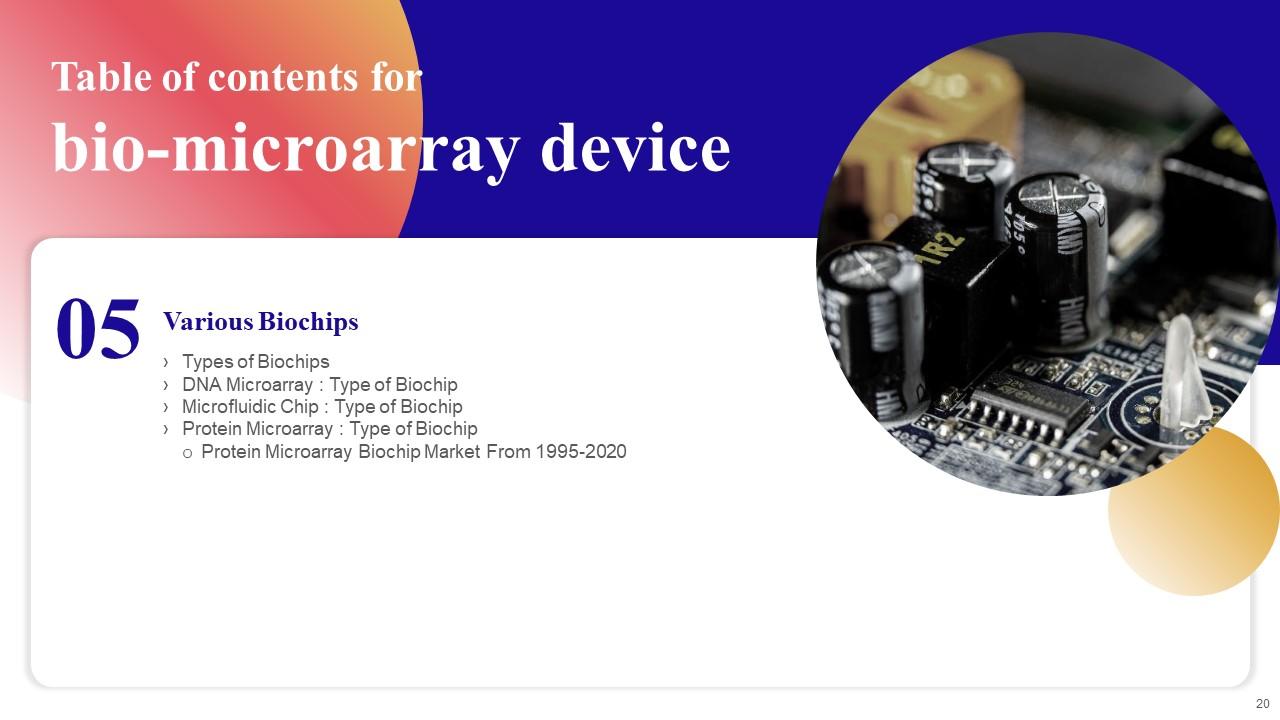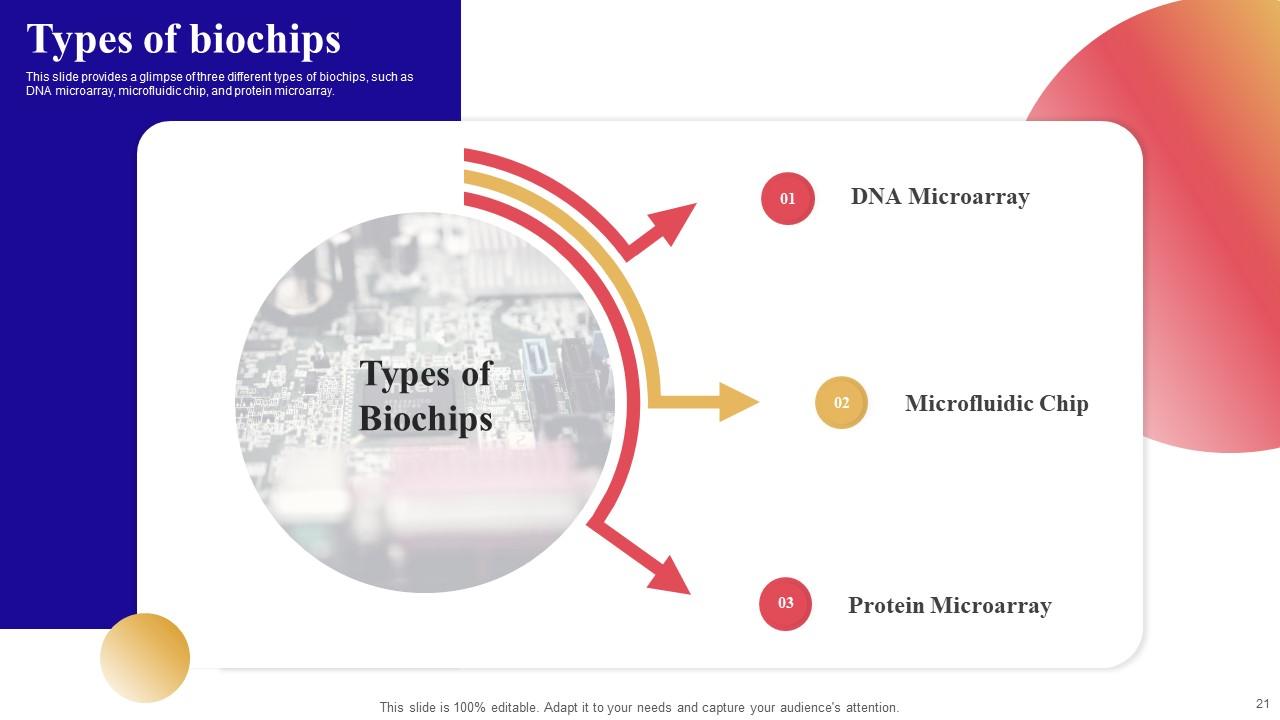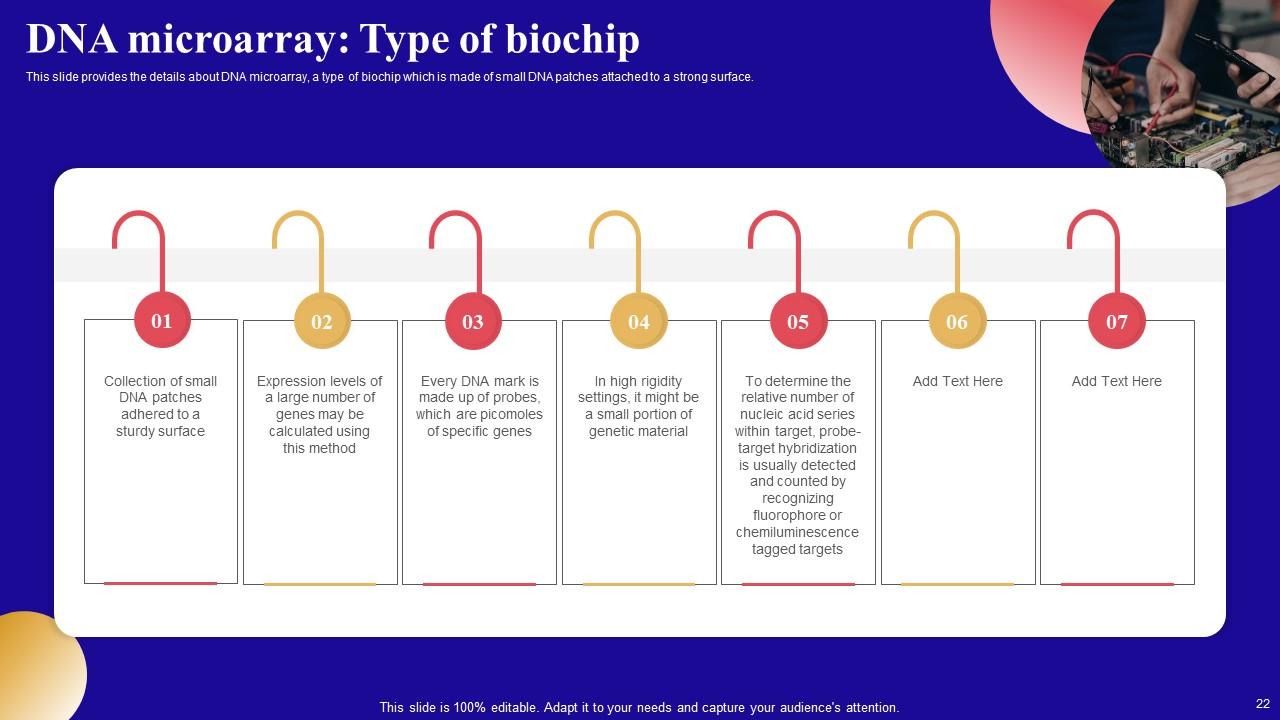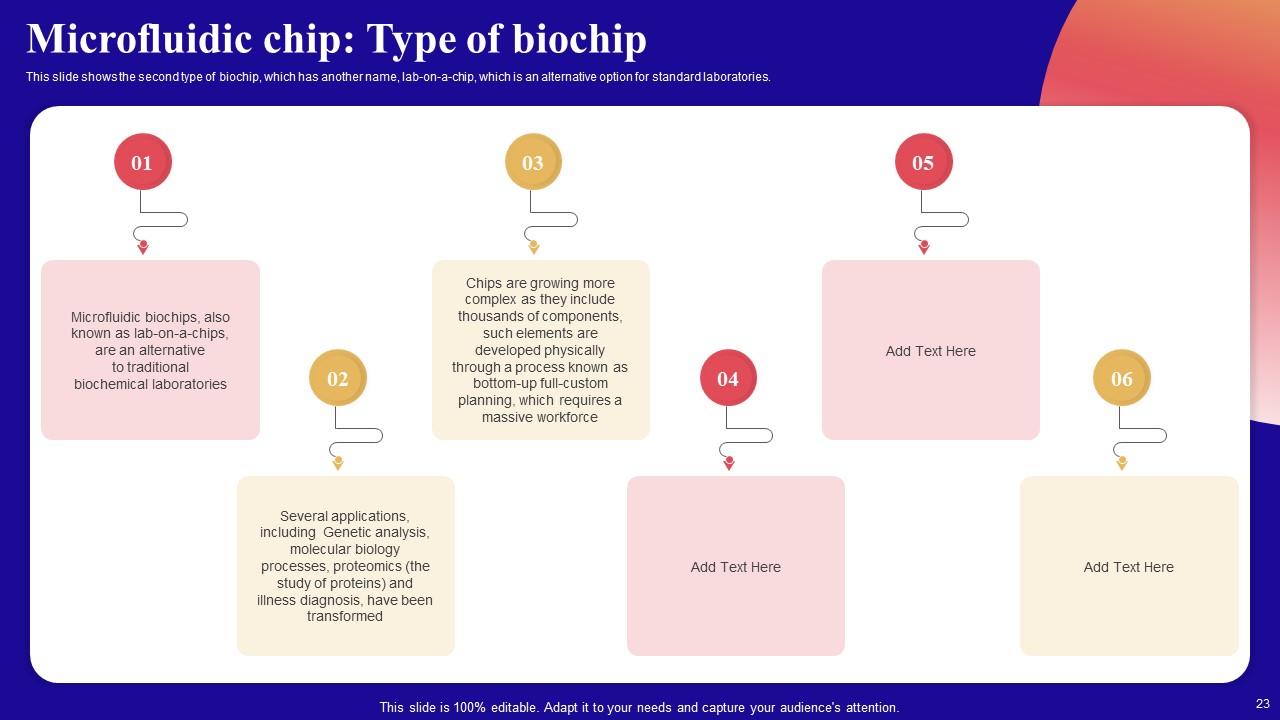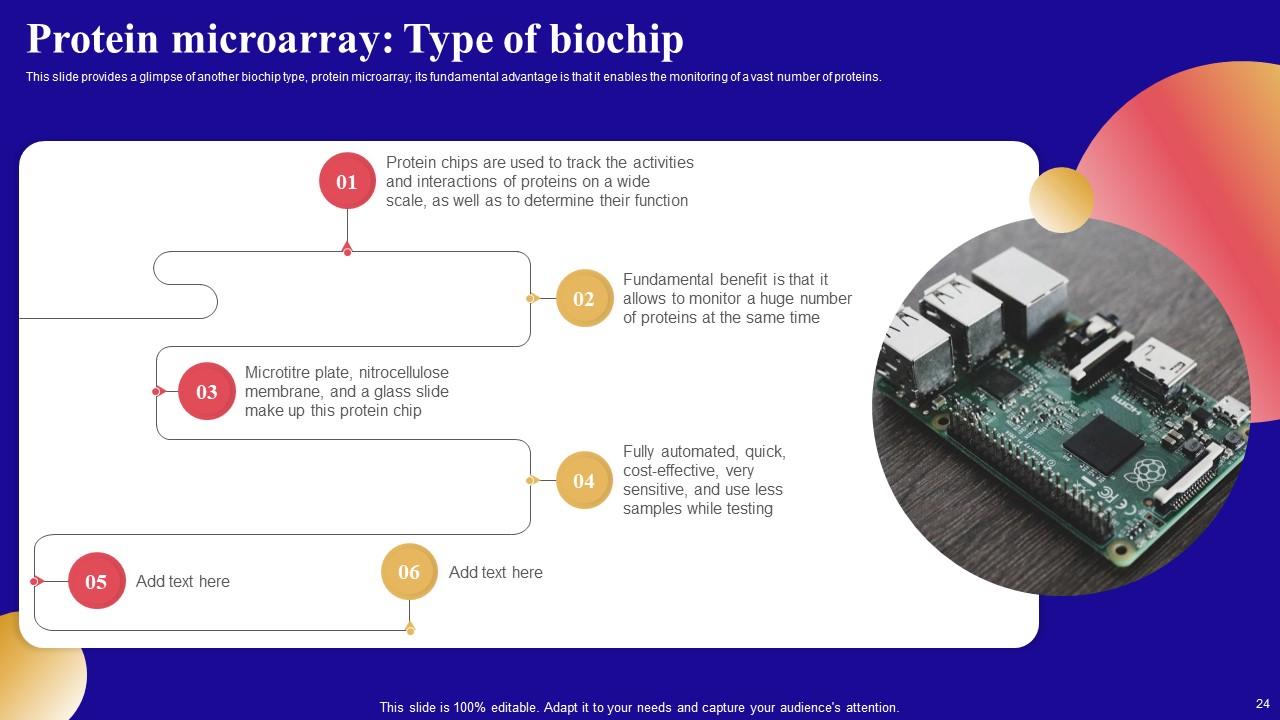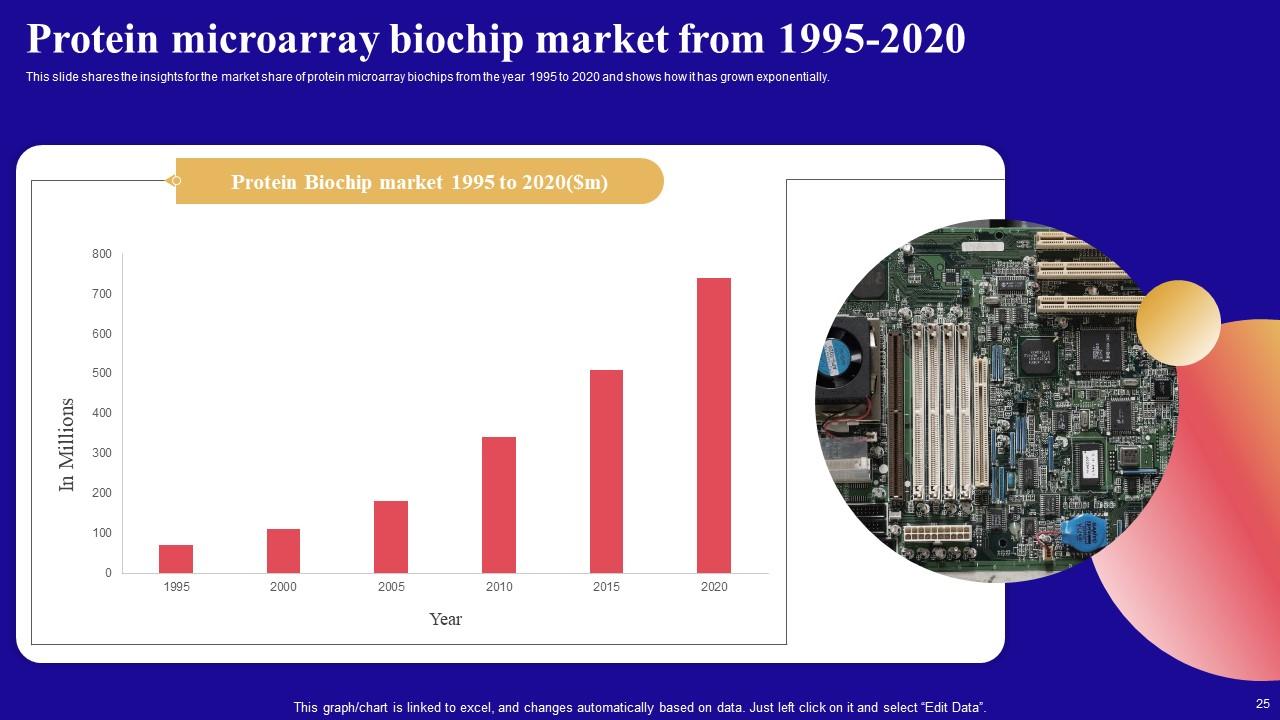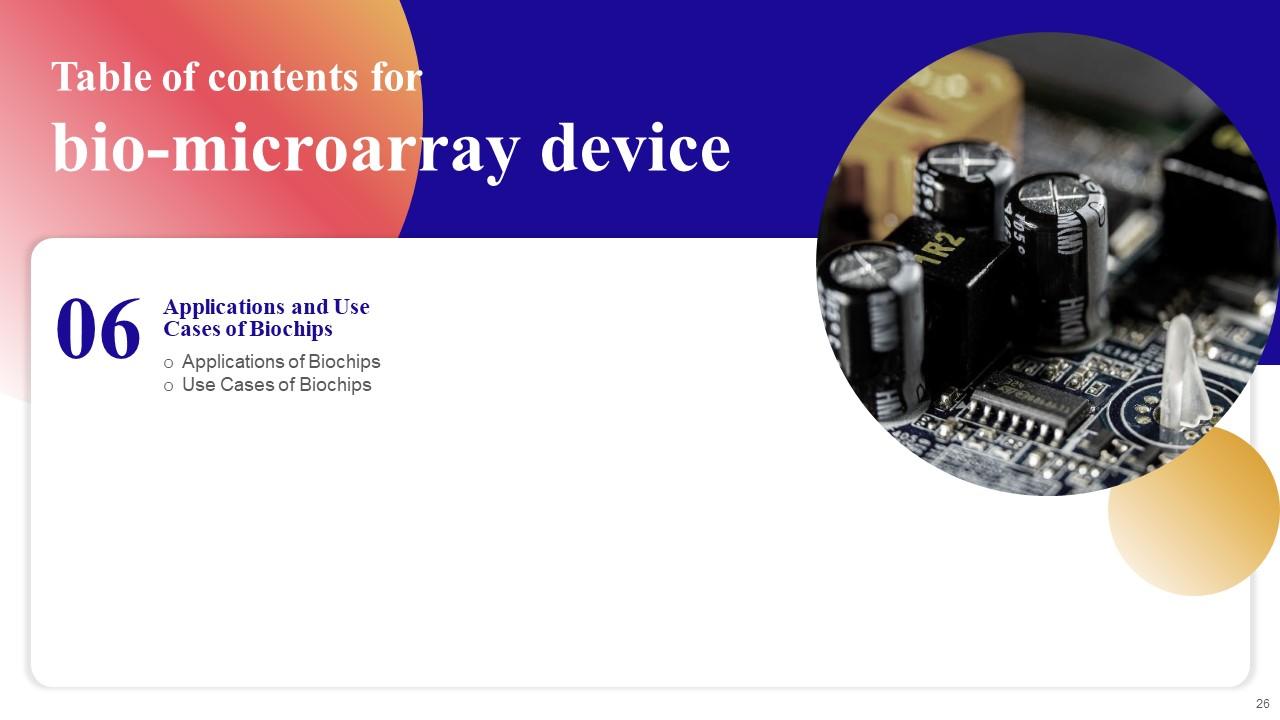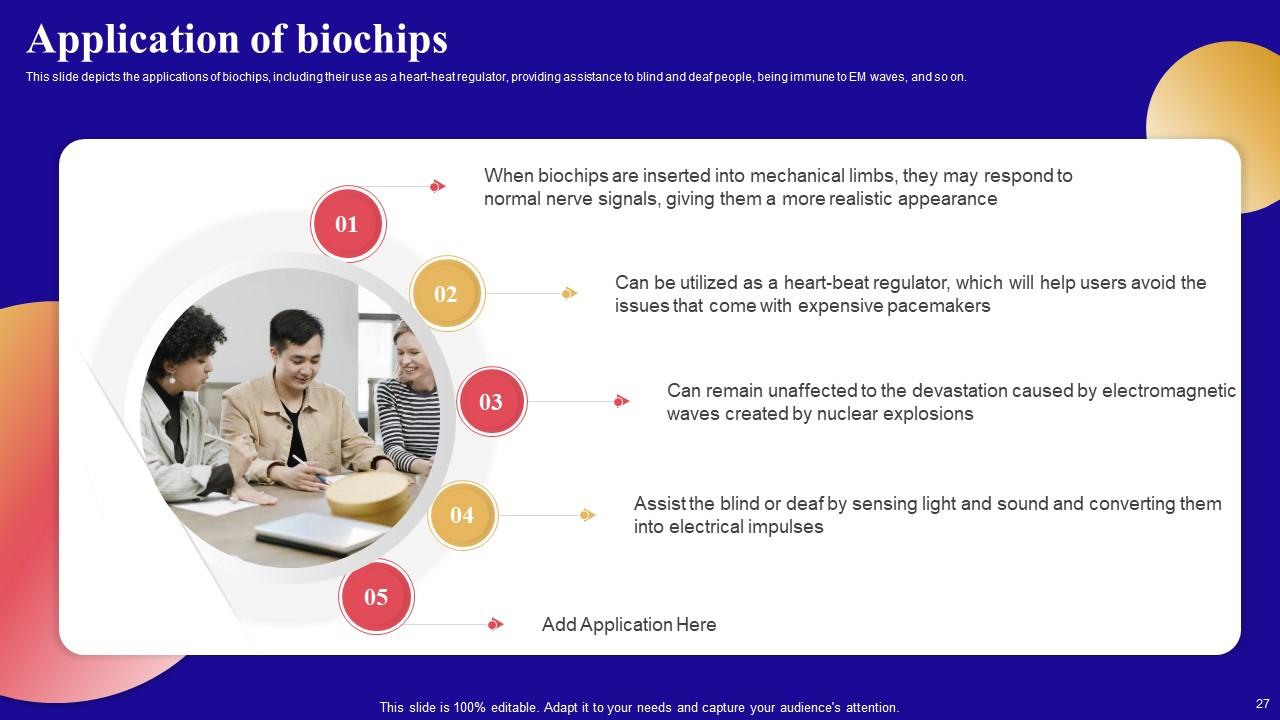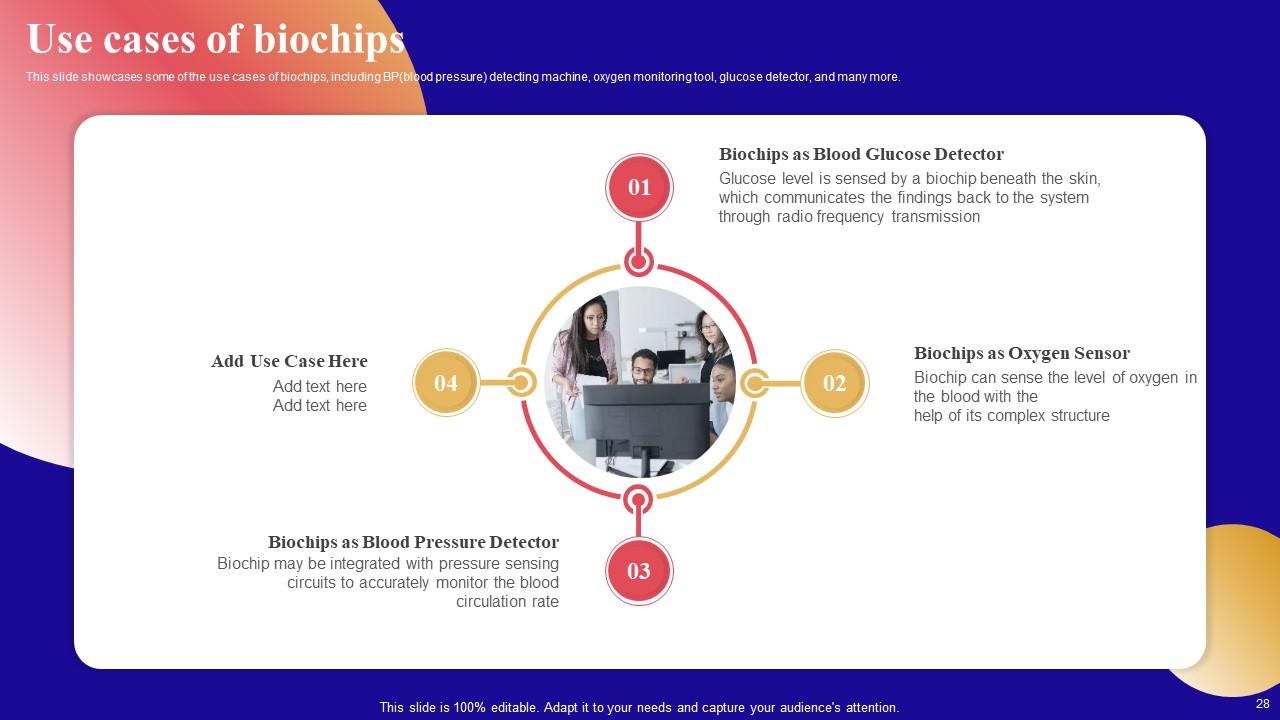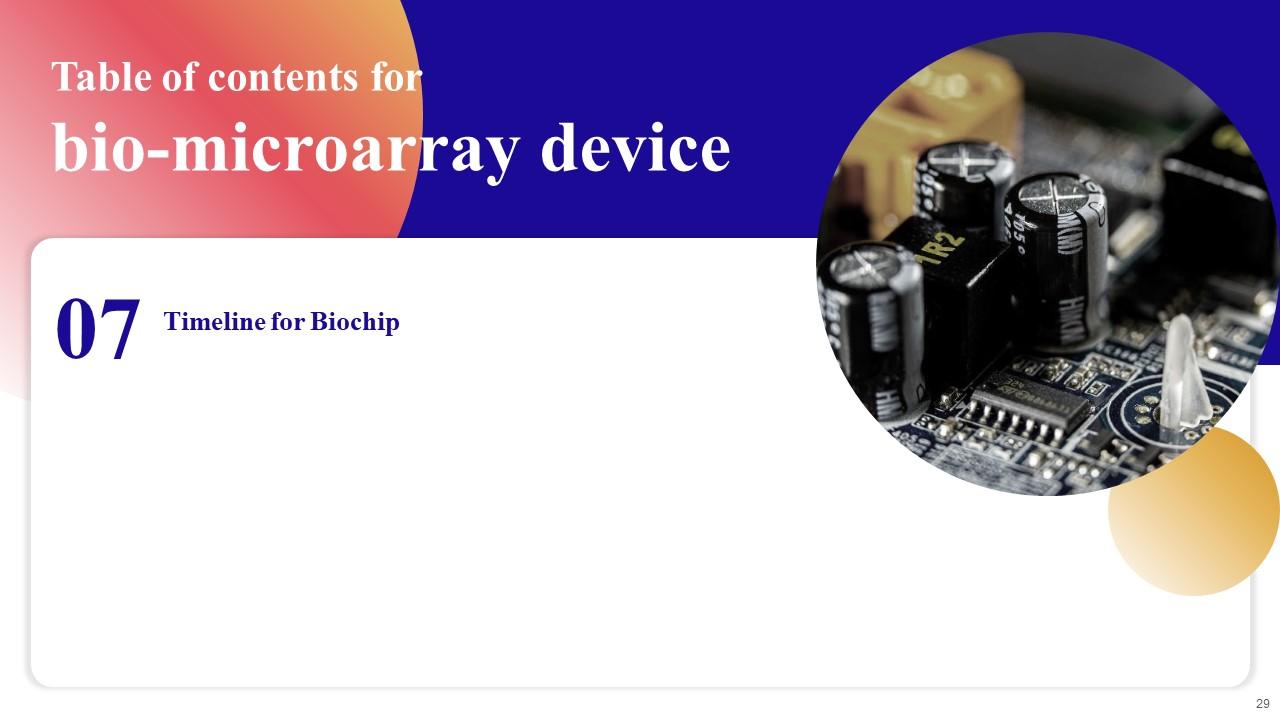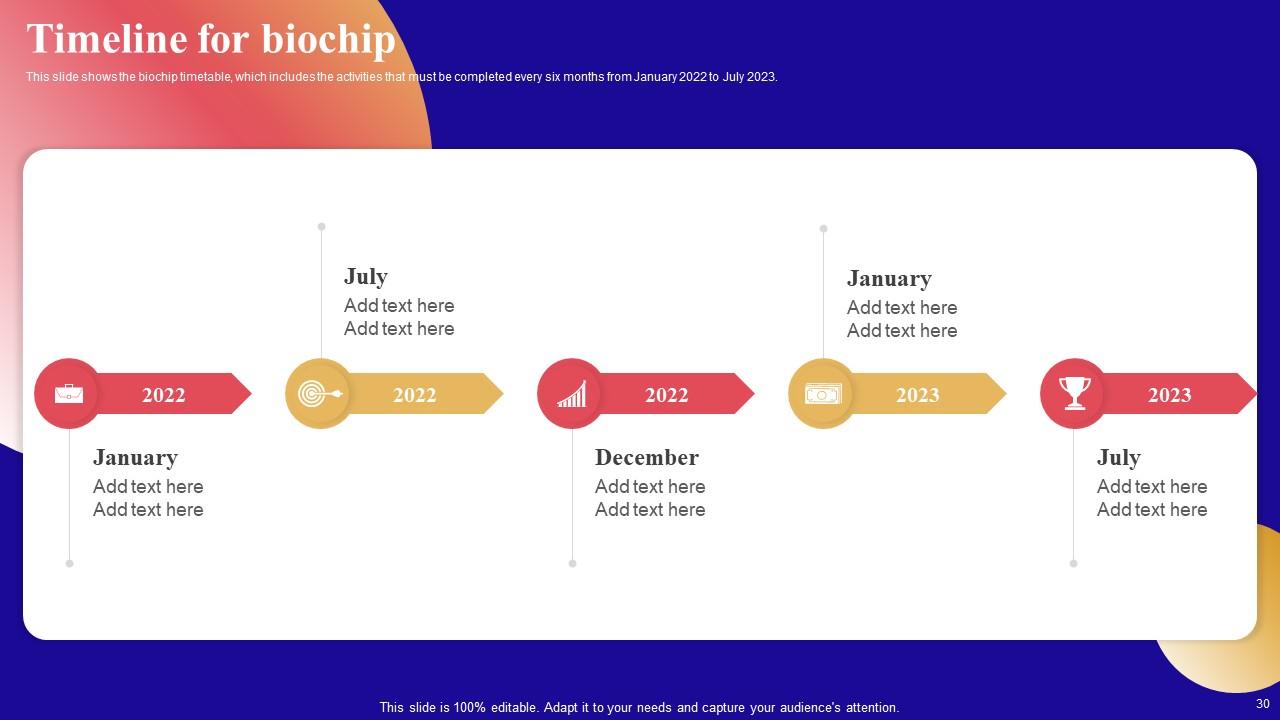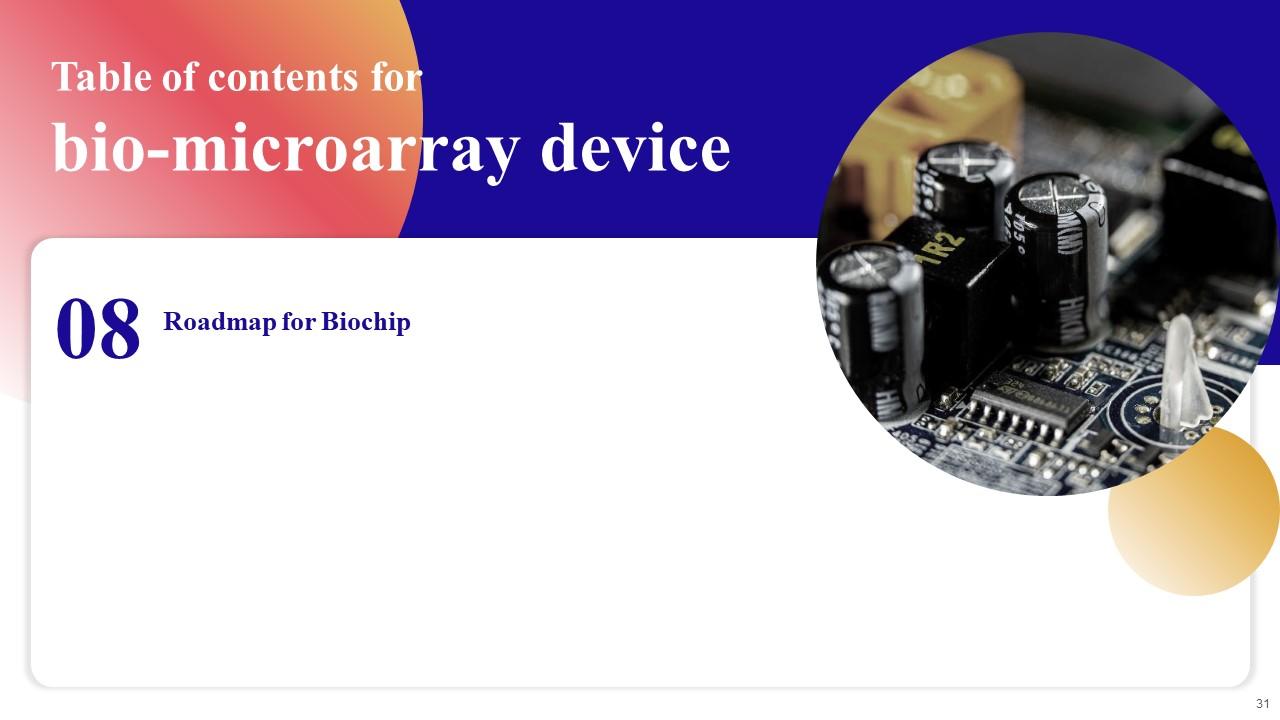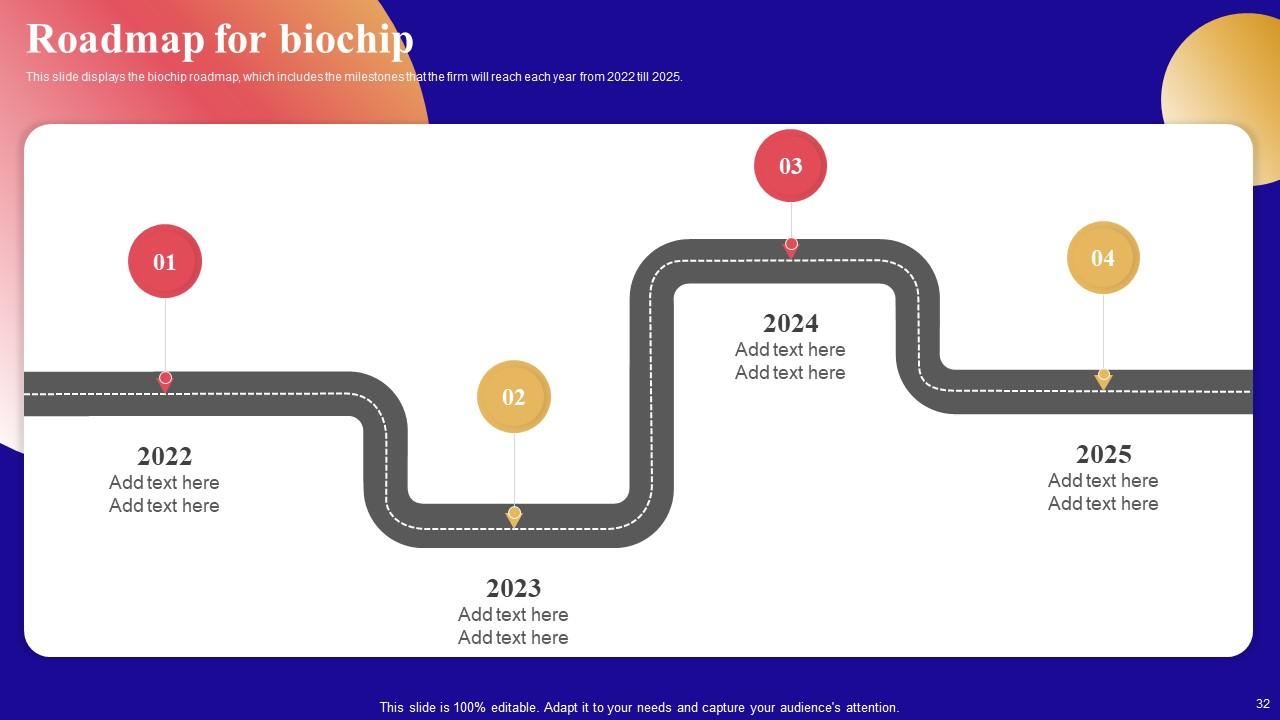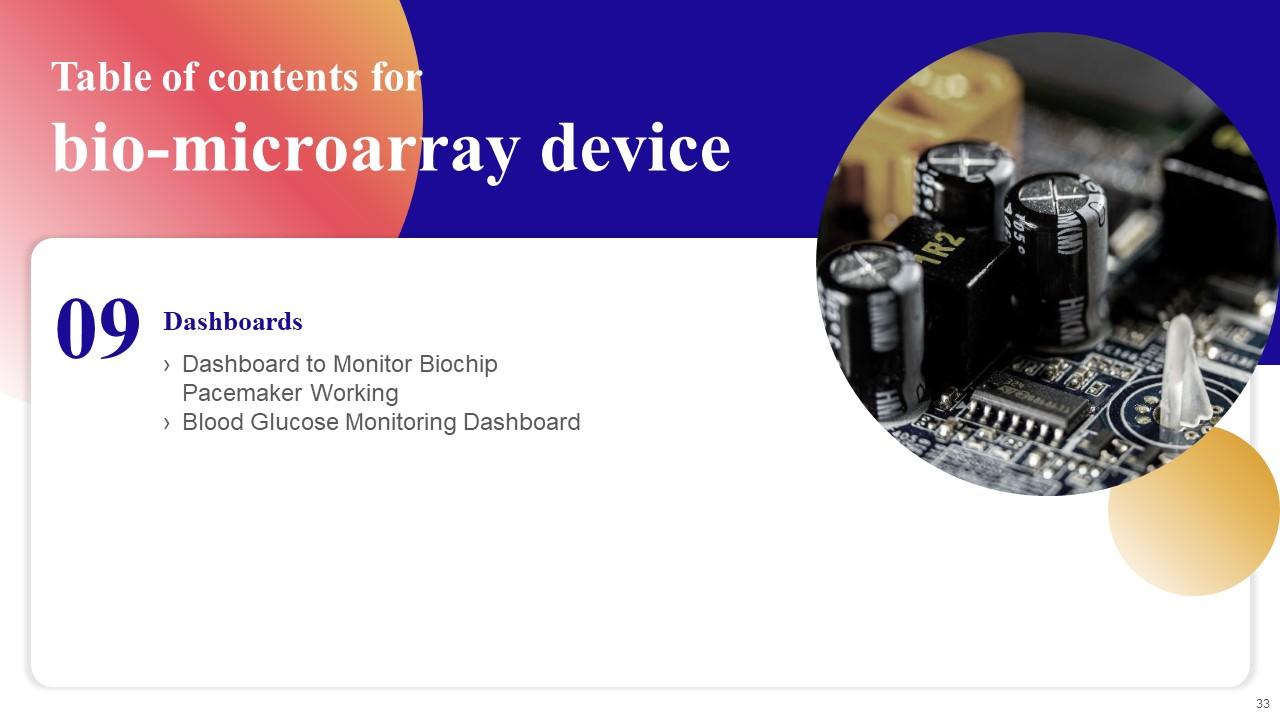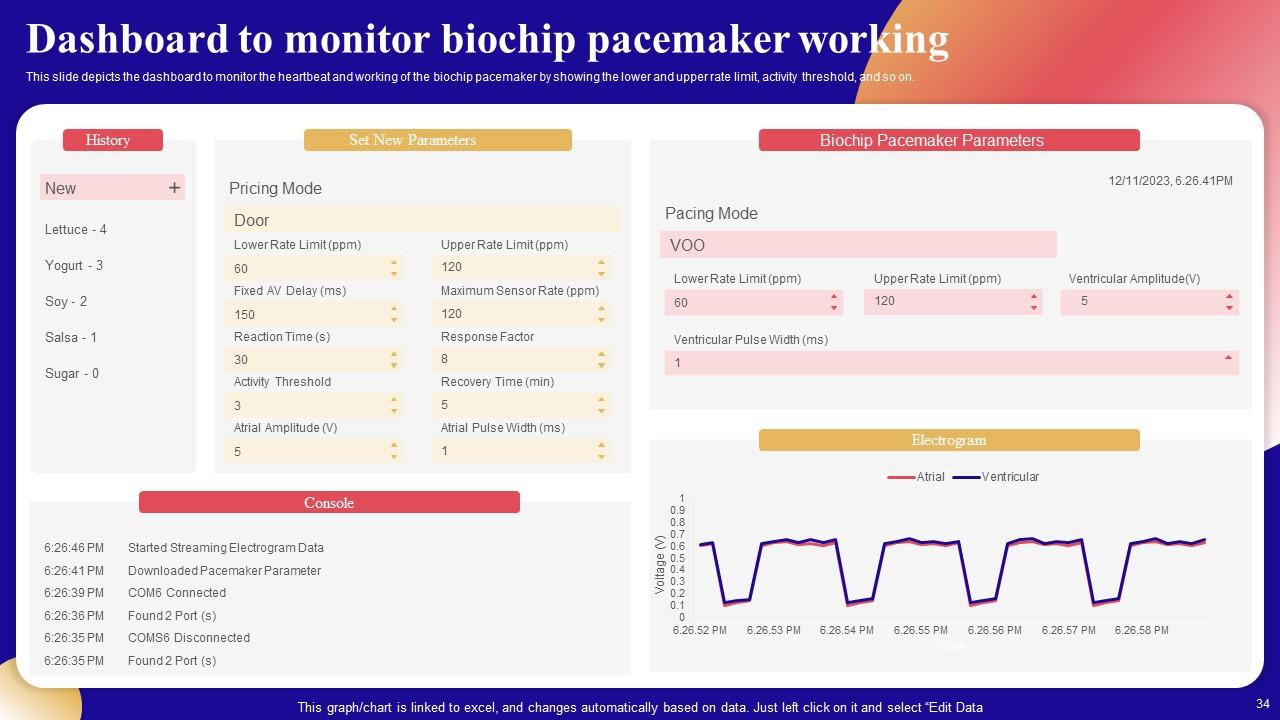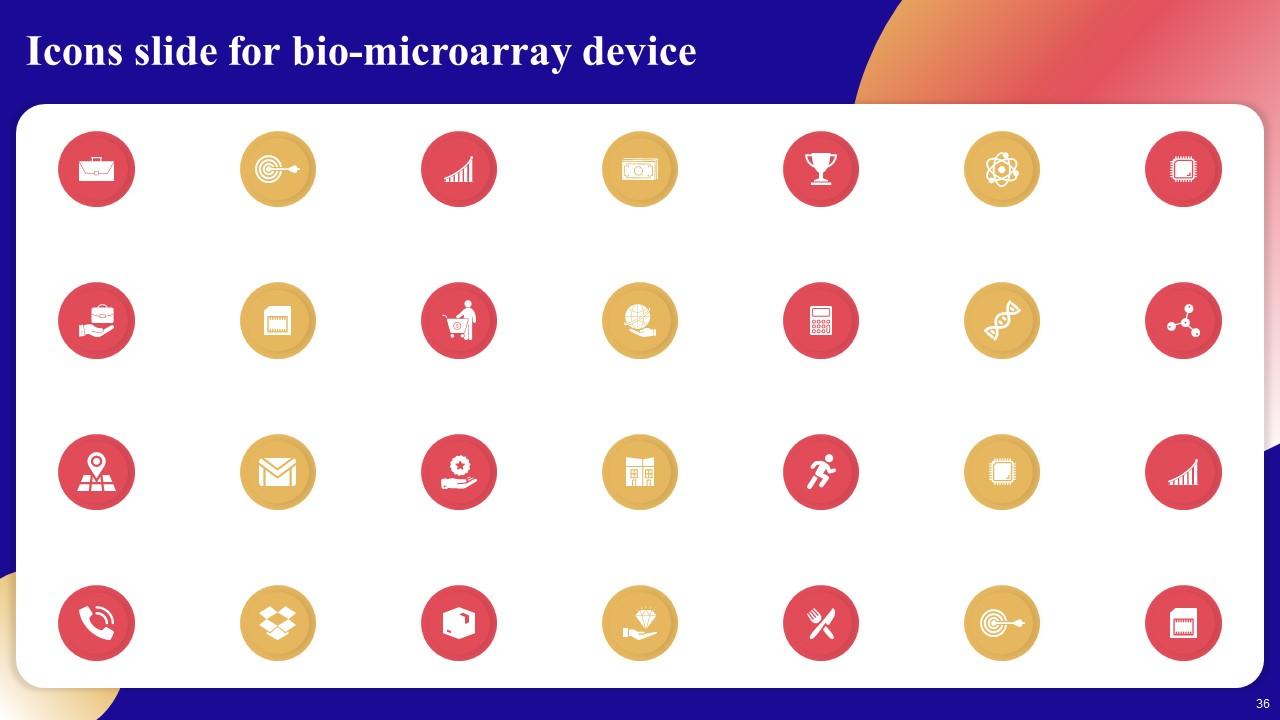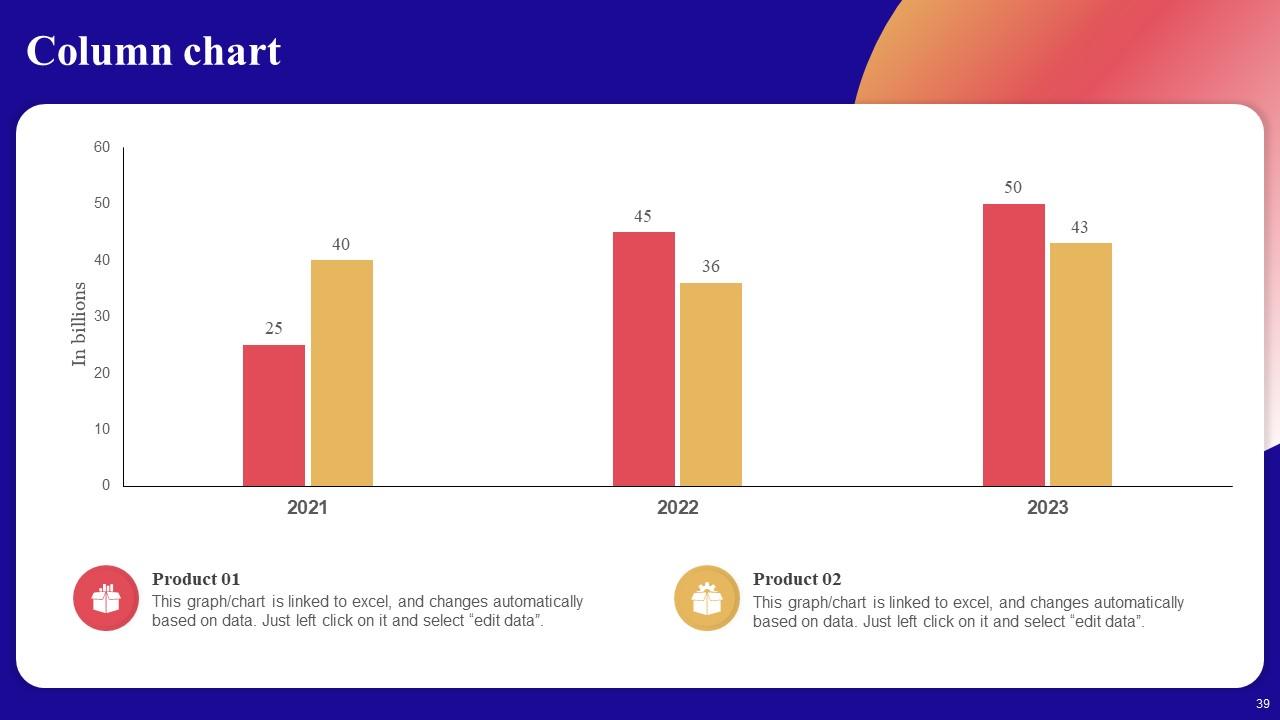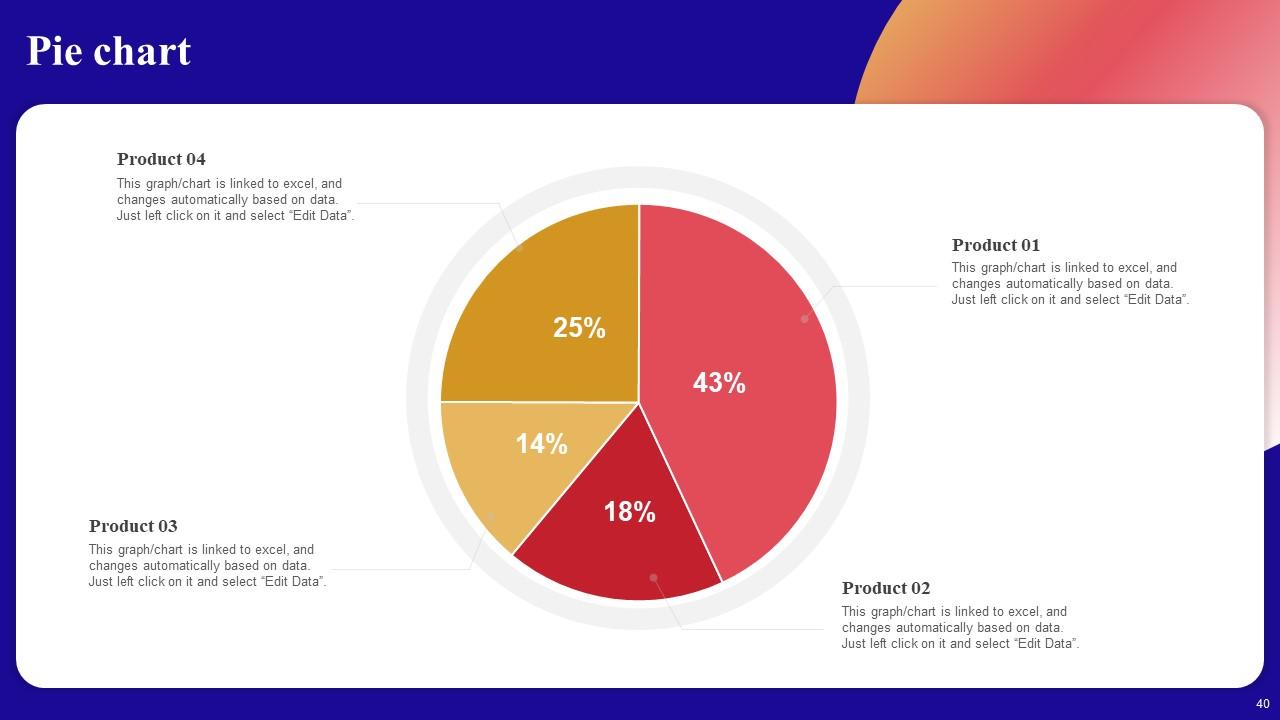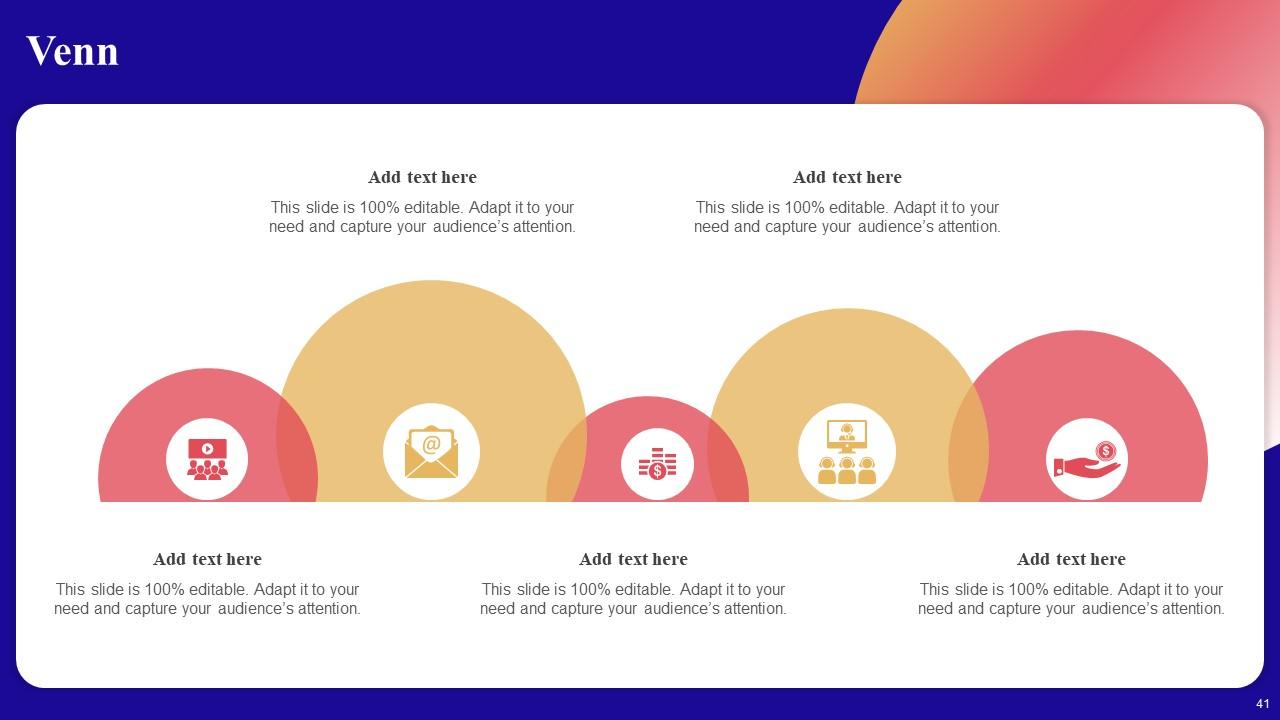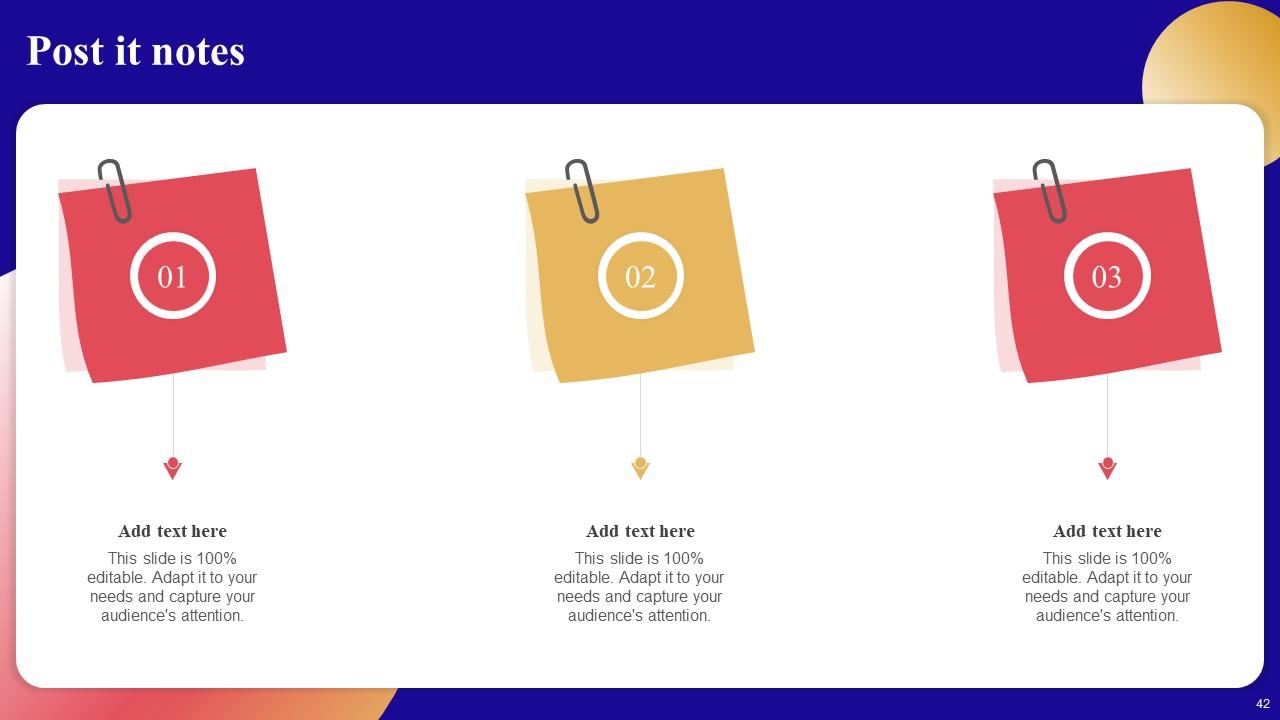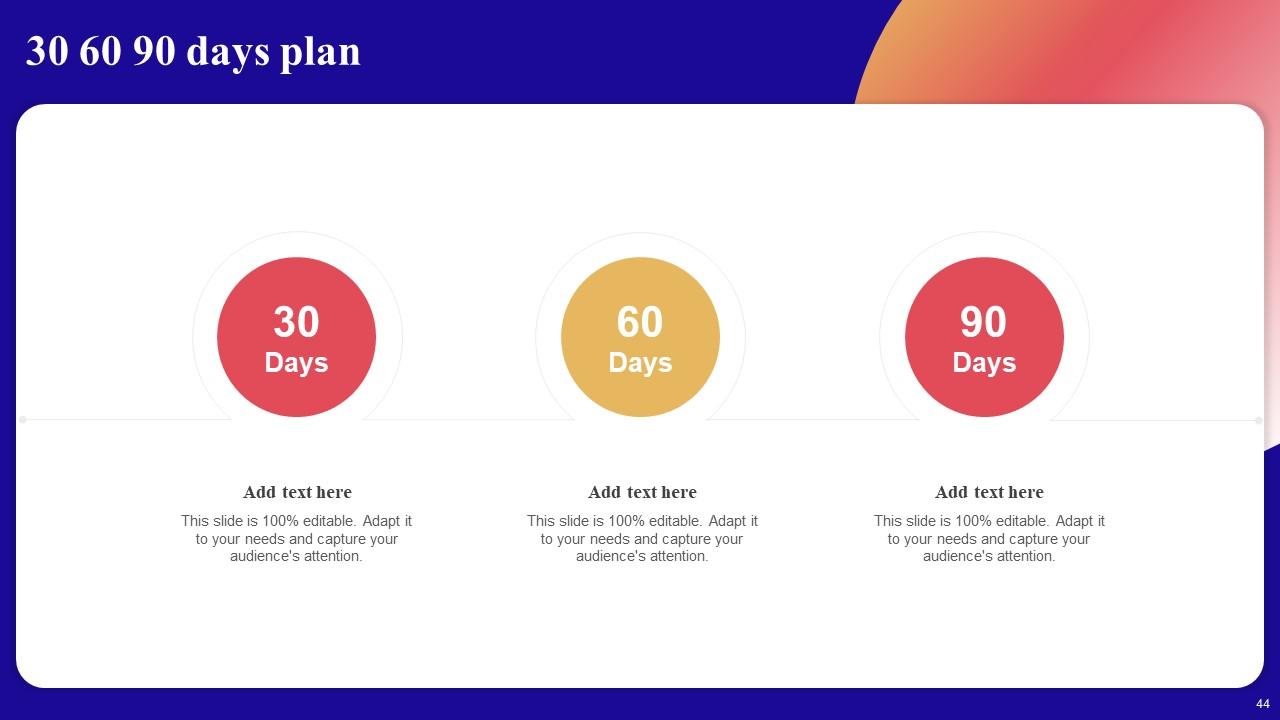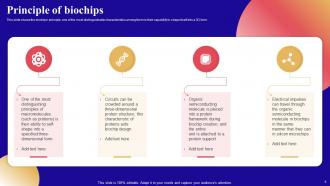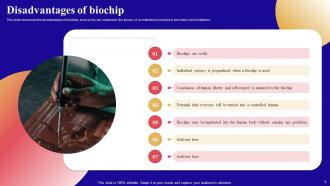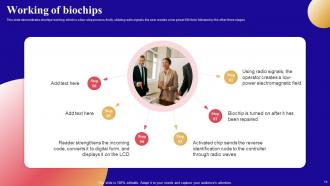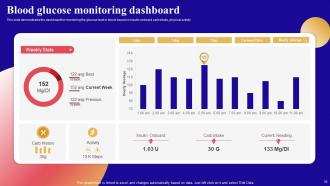Bio Microarray Device Powerpoint Presentation Slides
Biochips contain millions of sensor components or biosensors in the gadget, allowing several experiments to run simultaneously for higher throughput in less time. Check out our competently designed Bio microarray Device template that highlights details about its overview, advantages, working, application, use cases, etc. This PPT template displays principles of Biochips, US Biochips products market share, Biochips market share forecast, working of Biochips, etc. Moreover, this Biochips application template presents a block diagram of Biochips platform architecture, its components, transponder and four parts, reader details, and more. The PowerPoint presentation even exhibits the information regarding types of Biochips, DNA micro array, microfluidic chip, protein micro-array, Biochips market details from 1995 2022, etc. Furthermore, the bio micro-array device template highlights applications and use cases of Biochips, the timeline for Biochips, the roadmap, and more. One can even illustrate details for the dashboard to monitor Biochips pacemaker working, blood glucose monitoring dashboard, and more. Customize this 100 parcent editable template based on your requirements. Download it now
- Google Slides is a new FREE Presentation software from Google.
- All our content is 100% compatible with Google Slides.
- Just download our designs, and upload them to Google Slides and they will work automatically.
- Amaze your audience with SlideTeam and Google Slides.
-
Want Changes to This PPT Slide? Check out our Presentation Design Services
- WideScreen Aspect ratio is becoming a very popular format. When you download this product, the downloaded ZIP will contain this product in both standard and widescreen format.
-

- Some older products that we have may only be in standard format, but they can easily be converted to widescreen.
- To do this, please open the SlideTeam product in Powerpoint, and go to
- Design ( On the top bar) -> Page Setup -> and select "On-screen Show (16:9)” in the drop down for "Slides Sized for".
- The slide or theme will change to widescreen, and all graphics will adjust automatically. You can similarly convert our content to any other desired screen aspect ratio.
Compatible With Google Slides

Get This In WideScreen
You must be logged in to download this presentation.
PowerPoint presentation slides
Deliver this complete deck to your team members and other collaborators. Encompassed with stylized slides presenting various concepts, this Bio Microarray Device Powerpoint Presentation Slides is the best tool you can utilize. Personalize its content and graphics to make it unique and thought-provoking. All the forty five slides are editable and modifiable, so feel free to adjust them to your business setting. The font, color, and other components also come in an editable format making this PPT design the best choice for your next presentation. So, download now.
People who downloaded this PowerPoint presentation also viewed the following :
Content of this Powerpoint Presentation
Slide 1: This slide introduces Bio-Microarray Device. Commence by stating Your Company Name.
Slide 2: This sldie depicts the Agenda of the presentation.
Slide 3: This slide incorporates the Table of contents.
Slide 4: This slide indicates the Title for the Topics to be covered in the next template.
Slide 5: This slide presents the overview of biochips.
Slide 6: This slide shows the biochips’ principle, one of the most distinguishable characteristics being their capability to shape itself into a 3D form.
Slide 7: This slide highlights the various benefits of biochips.
Slide 8: This slide showcases the disadvantages of biochips.
Slide 9: This slide contains the Heading for the Contents to be covered further.
Slide 10: This slide provides the U.S. biochip products market on the basis of various biochip types from year 2014-2022.
Slide 11: This slide comprises market analysis and forecasts from 2016 to 2025.
Slide 12: This slide elucidates the Title for the Ideas to be discussed next.
Slide 13: This slide demonstrates the block diagram of blockchain platform architecture which includes mainly two components FCCM and SPM.
Slide 14: This slide deals with the biochips' working.
Slide 15: This slide displays the Heading for the Componenets to be covered in the forth-coming template.
Slide 16: This slide provides a glimpse of the biochips’ components.
Slide 17: This slide gives information about the biochips’ components.
Slide 18: This slide depicts the four parts of the transponder.
Slide 19: This slide provides an insight of the reader, which is another component of biochip and is made up of an exciter that creates the EM(electromagnetic field).
Slide 20: This slide indicates the Heading for the Ideas to be discussed further.
Slide 21: This slide states the three different types of biochips, such as DNA microarray, microfluidic chip, and protein microarray.
Slide 22: This slide provides the details about DNA microarray, a type of biochip which is made of small DNA patches attached to a strong surface.
Slide 23: This slide shows the second type of biochip, which has another name, lab-on-a-chip, which is an alternative option for standard laboratories.
Slide 24: This slide gives a glimpse of another biochip type, protein microarray; its fundamental advantage is that it enables the monitoring of a vast number of proteins.
Slide 25: This slide shares the insights for the market share of protein microarray biochips from the year 1995 to 2020 and shows how it has grown exponentially.
Slide 26: This slide contains the Title for the Topics to be covered next.
Slide 27: This slide depicts the applications of biochips.
Slide 28: This slide showcases some of the use cases of biochips.
Slide 29: This slide exhibits information about the Heading for the Ideas to be discussed in the upcoming template.
Slide 30: This slide illustrates the timeline for biochip.
Slide 31: This slide reveals the Heading for the Contents to be covered next.
Slide 32: This slide displays the biochip roadmap depicting the Organization's journey.
Slide 33: This slide highlights the Title for the Topics to be discussed in the upcoming template.
Slide 34: This slide depicts the dashboard to monitor the heartbeat and working of the biochip pacemaker.
Slide 35: This slide demonstrates the dashboard for monitoring the glucose level in blood-based on insulin onboard, carb intake, physical activity.
Slide 36: This is the Icons slide for bio-microarray device depicting all the Icons used.
Slide 37: This slide is used to mention Additional information.
Slide 38: This is the About us slide. State your Company information here.
Slide 39: This slide represents the Column chart for comparison.
Slide 40: This sldie displays the Pie chart for showcasing relevant Company information.
Slide 41: This is the Venn diagram slide for depicting other relevant information.
Slide 42: This slide includes the Post it notes for reminders and deadlines.
Slide 43: This is the Puzzle slide with related imagery.
Slide 44: This slide incorporates the 30 60 90 days plan for effective planning.
Slide 45: This is the Thank you slide for acknowledgement.
Bio Microarray Device Powerpoint Presentation Slides with all 50 slides:
Use our Bio Microarray Device Powerpoint Presentation Slides to effectively help you save your valuable time. They are readymade to fit into any presentation structure.
FAQs
Biochips are small, electronic devices that contain biological material, such as DNA, RNA, or proteins, which can be used to perform a variety of tasks, such as diagnosing diseases, detecting pollutants, or identifying pathogens.
Biochips have several benefits, including high sensitivity, specificity, and accuracy, as well as the ability to perform multiple tasks simultaneously and in real-time. They are also portable, cost-effective, and can be used for a wide range of applications.
Some disadvantages of biochips include their limited storage capacity, the possibility of contamination, and the need for specialized equipment and expertise to operate them. There are also concerns regarding privacy and security, as biochips can be used for tracking and identification purposes.
There are three main types of biochips: DNA microarrays, microfluidic chips, and protein microarrays. DNA microarrays are used for genetic analysis, microfluidic chips are used for fluid manipulation and control, and protein microarrays are used for protein detection and analysis.
Biochips have numerous applications in healthcare, agriculture, environmental monitoring, and biodefense. They can be used for disease diagnosis, drug discovery, food safety testing, and pathogen detection, among others.
-
Their products can save your time, effort and money. What else you need. All in one package for presentation needs!
-
Use of different colors is good. It's simple and attractive.


